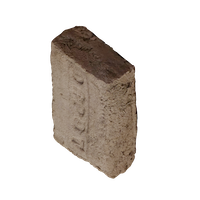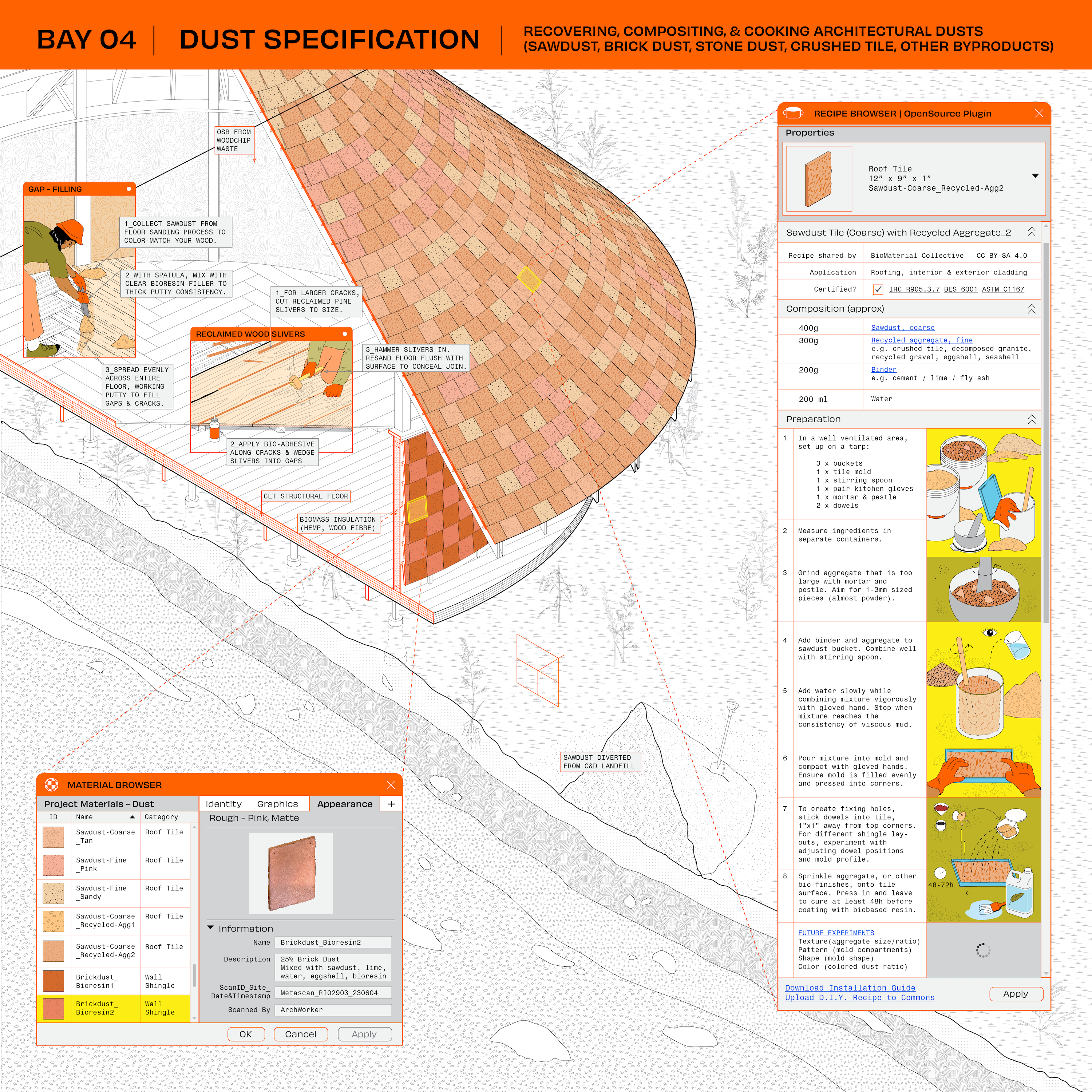STOCK
OFF-THE-SHELF HARDWARE

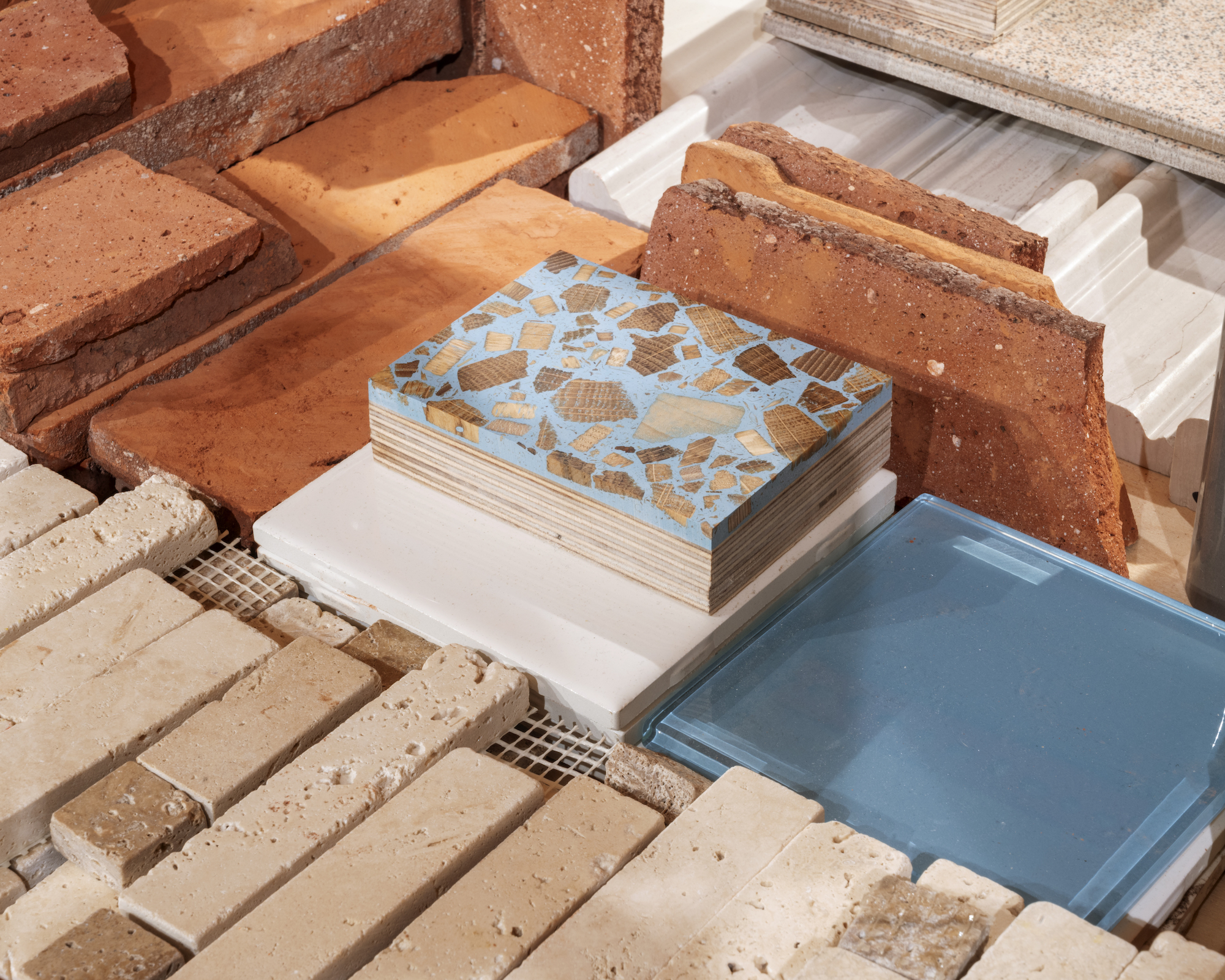





FITTINGS, FIXTURES, EQUIPMENT
GALLERY BAY 01
PRODUCTS
From sinks and sconces to doorknobs and stoves: pre-loved FF&E (fixtures, furniture and equipment) abound in architectural salvage and vintage stores everywhere. These readymades tend to be the easiest to reuse without much alteration.
See SUPPLIER-LIST for full vendor map.
BROWSE
Users are invited to peruse and touch the door hardware display (bottom shelf). At the very end of the exhibition, the public will be invited to take home any hardware they like. Please stay tuned for the final artist talk and closing reception on 9/21.
EARTH / GROUND COVER



SOIL BRICK
GALLERY BAY 02
In the eyes of construction logistics, uncontaminated native soil can be seen as C&D waste.
Excavated from construction sites and deep foundation pits, soil that is not used as backfill, is often transported offsite and out of state to be dumped or resold. In 2018, the New York Times reported on the sheer volume of valuable soil leaving NYC: "Every year, between two million and three million tons are carted off to dumps upstate, in Long Island and in New Jersey. "
The Clean Soil Bank is one municipal initaitive that intervenes this excavation-to-landfill cycle by creating their own stockpile of high-quality soil in Brooklyn — keeping dirt from New York in New York, for easy and free future use by parks and recreation services, for community gardens, and virtually anyone who wants soil.
PRODUCT
This overlooked yet critical material is the main ingredient in our sun-dried adobe block series. Designed to biodegrade and return soil over time, as plants take over.
NOTE
Some bricks may be pre-seeded.
Brick molds and phragmites not included.
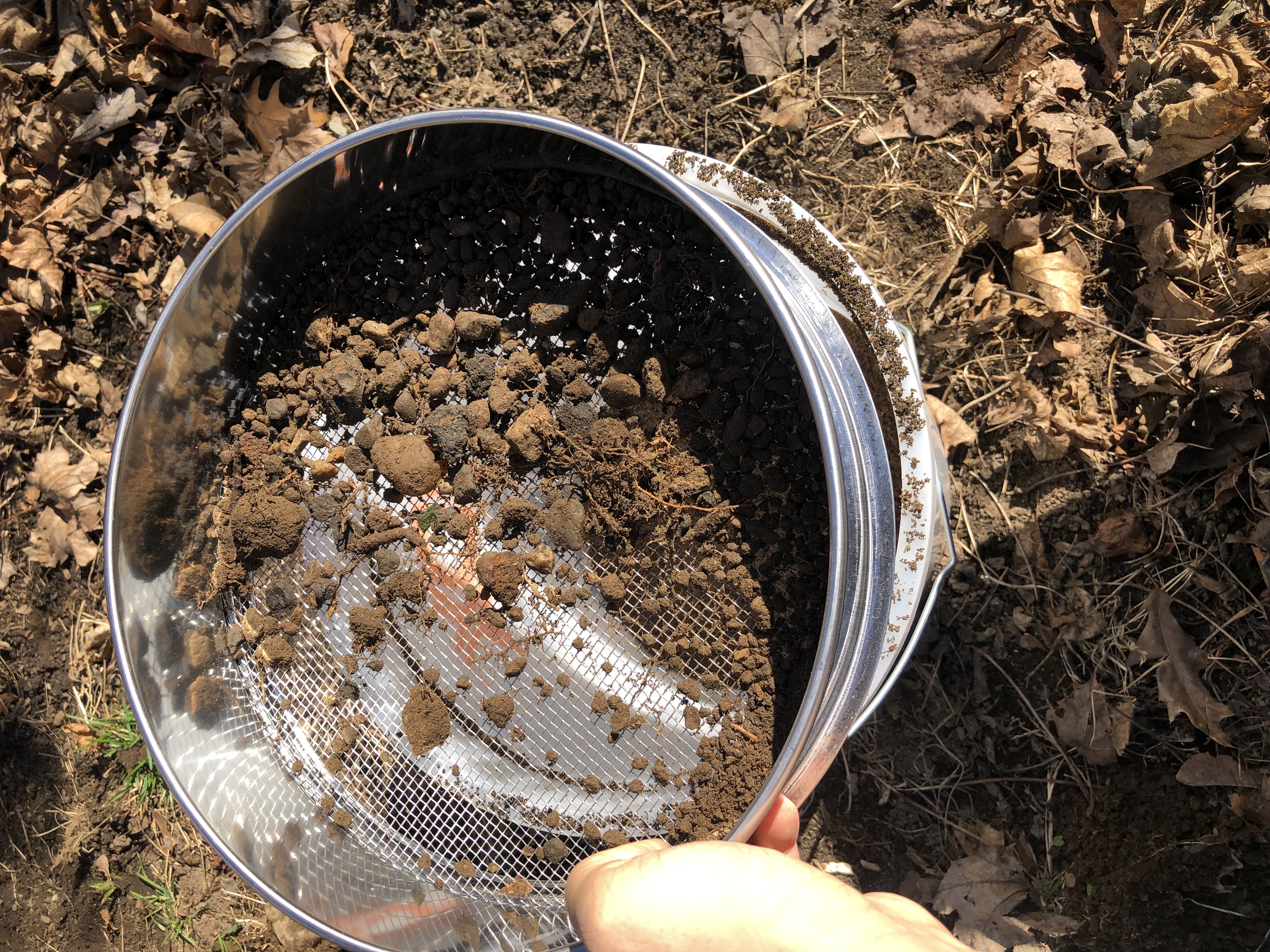
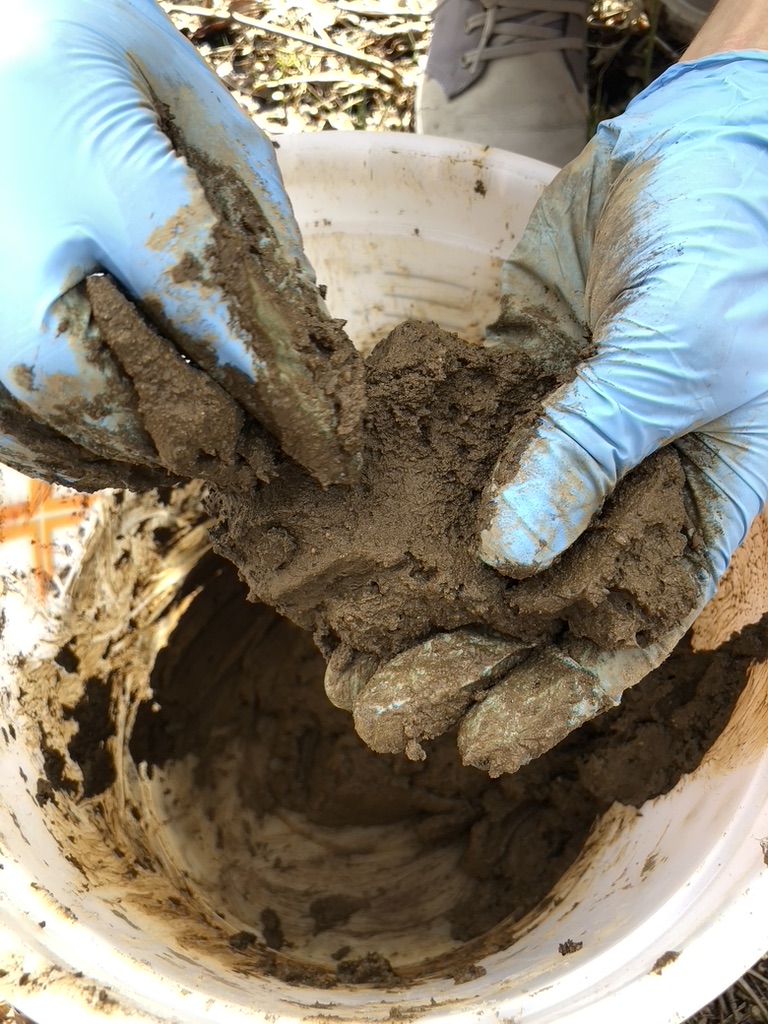
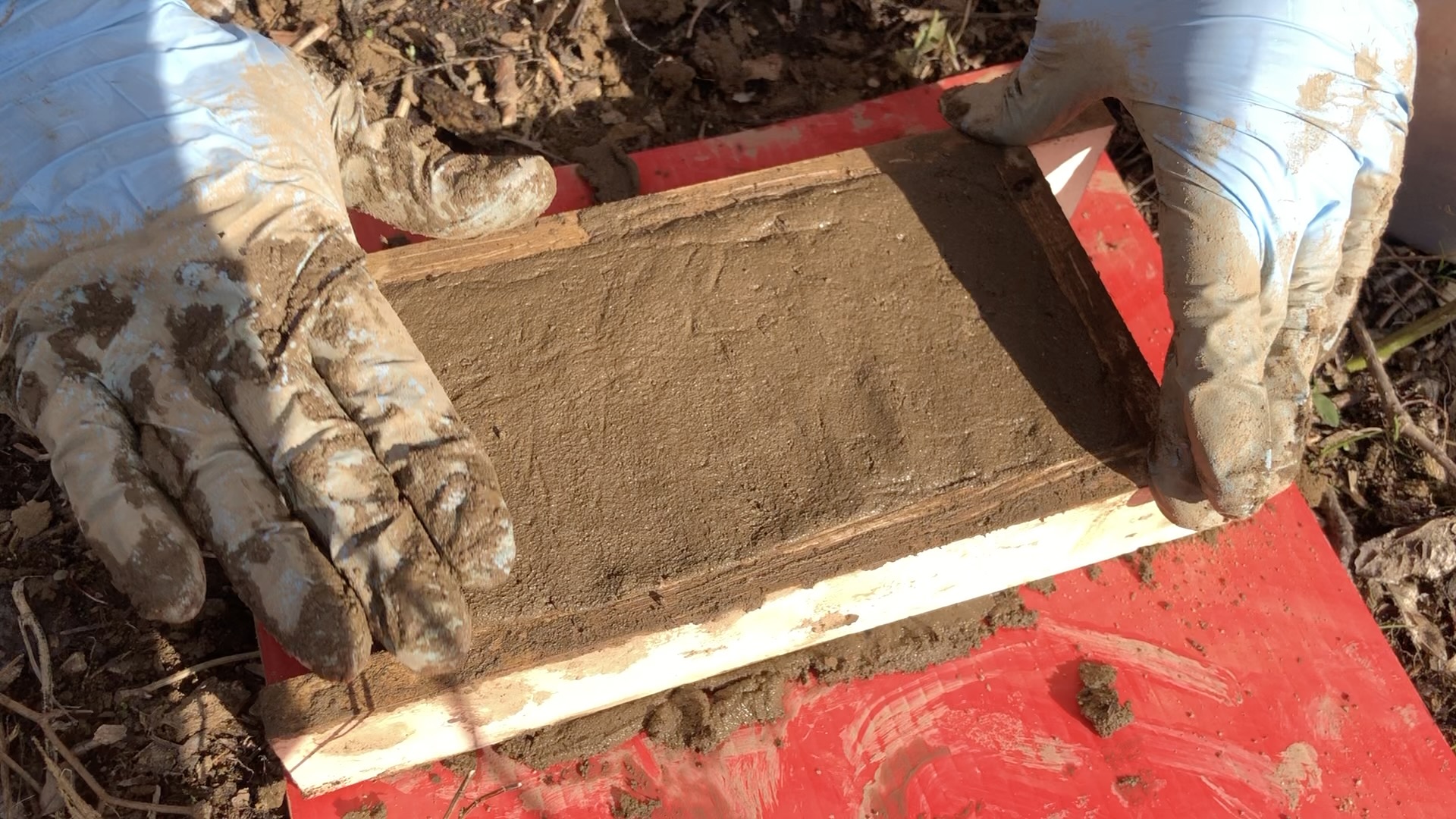
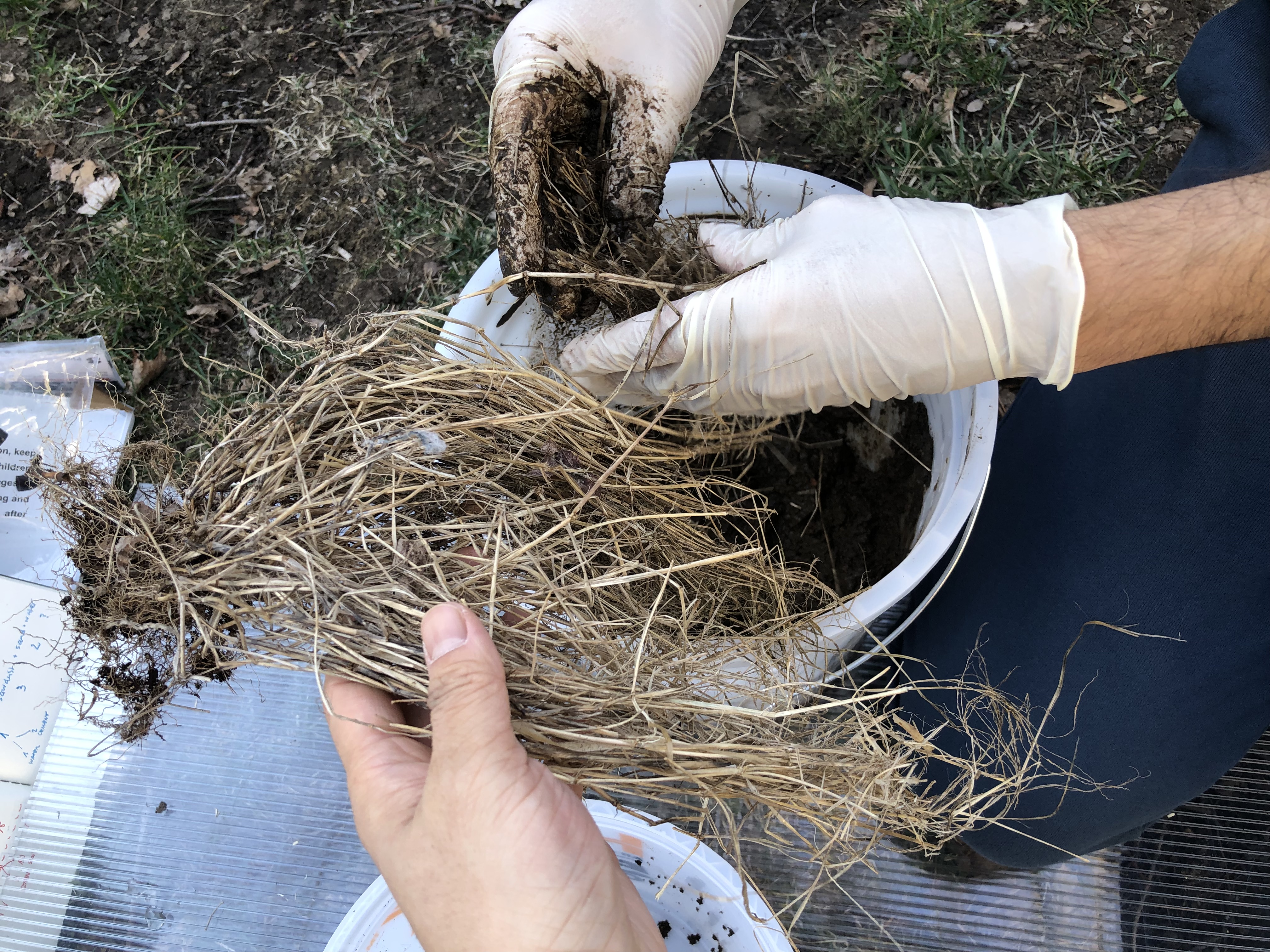

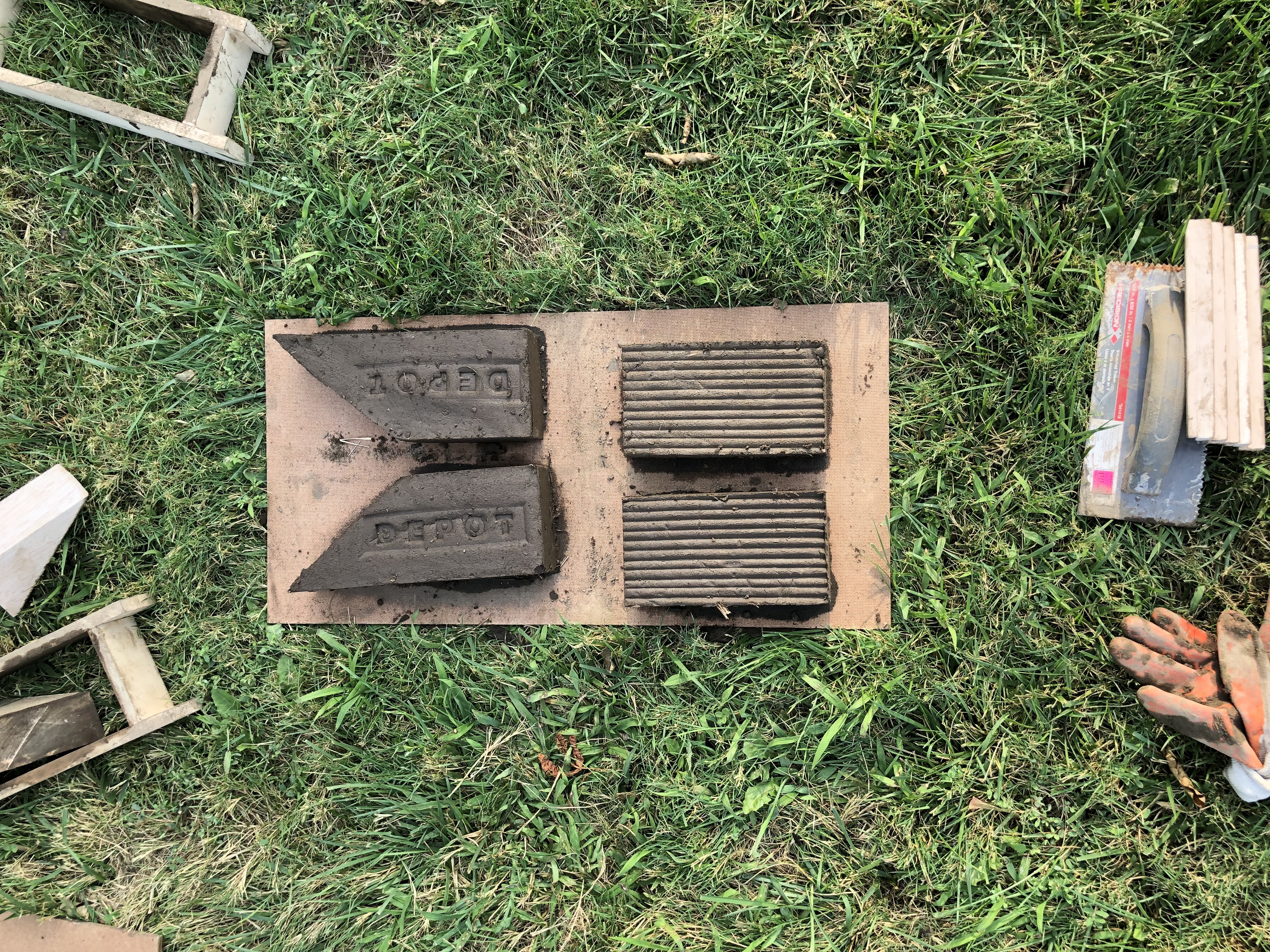
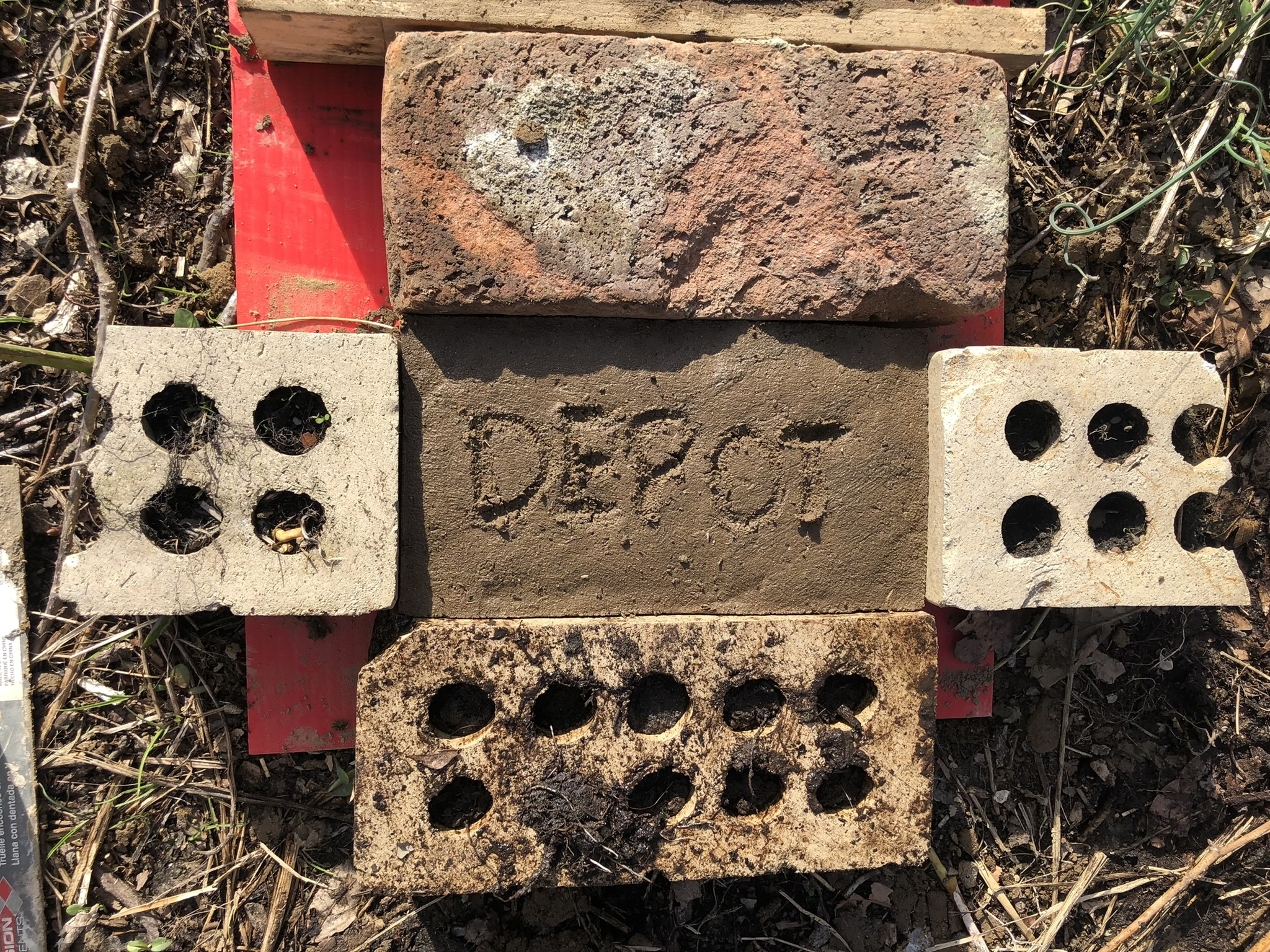
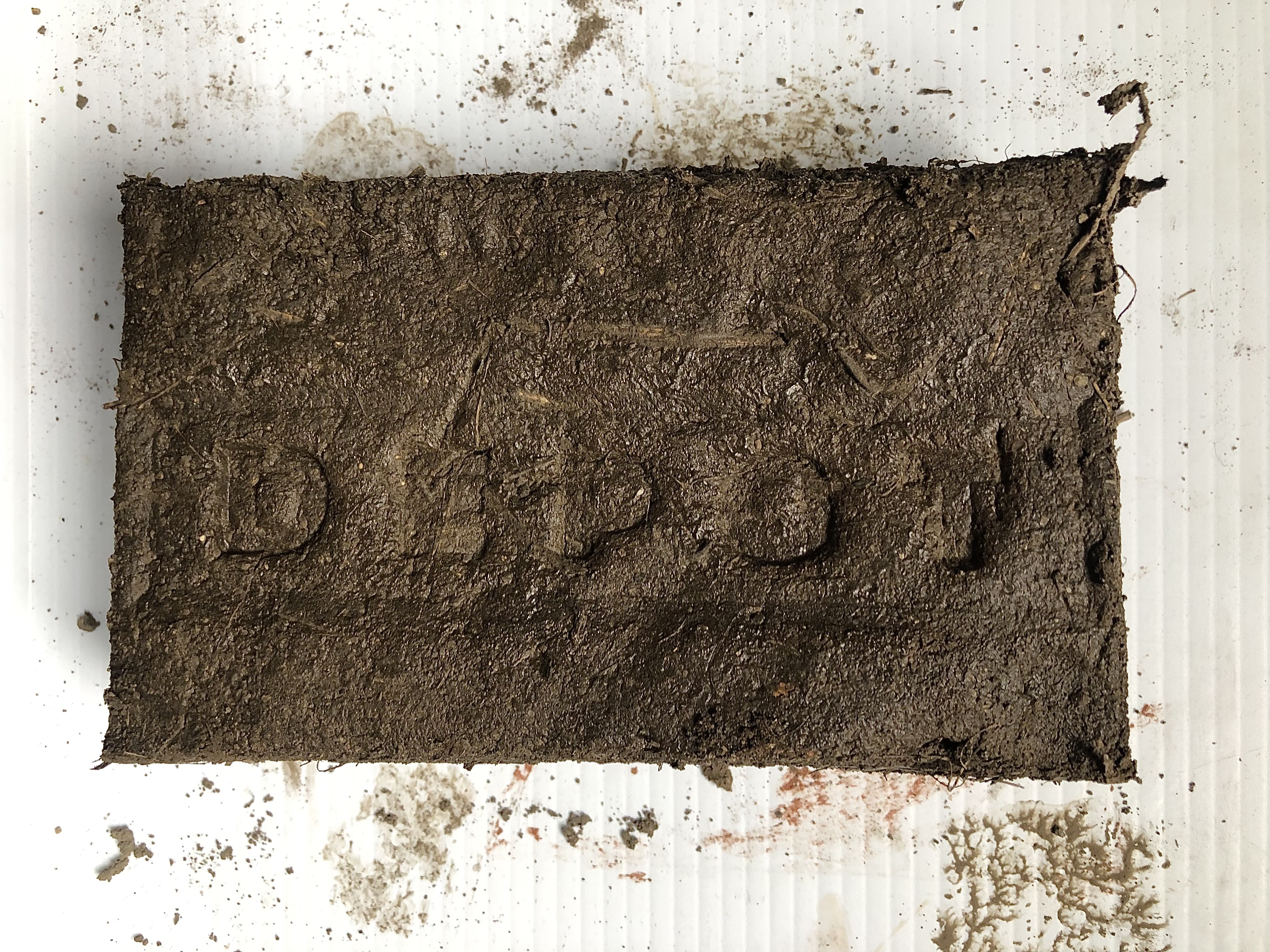
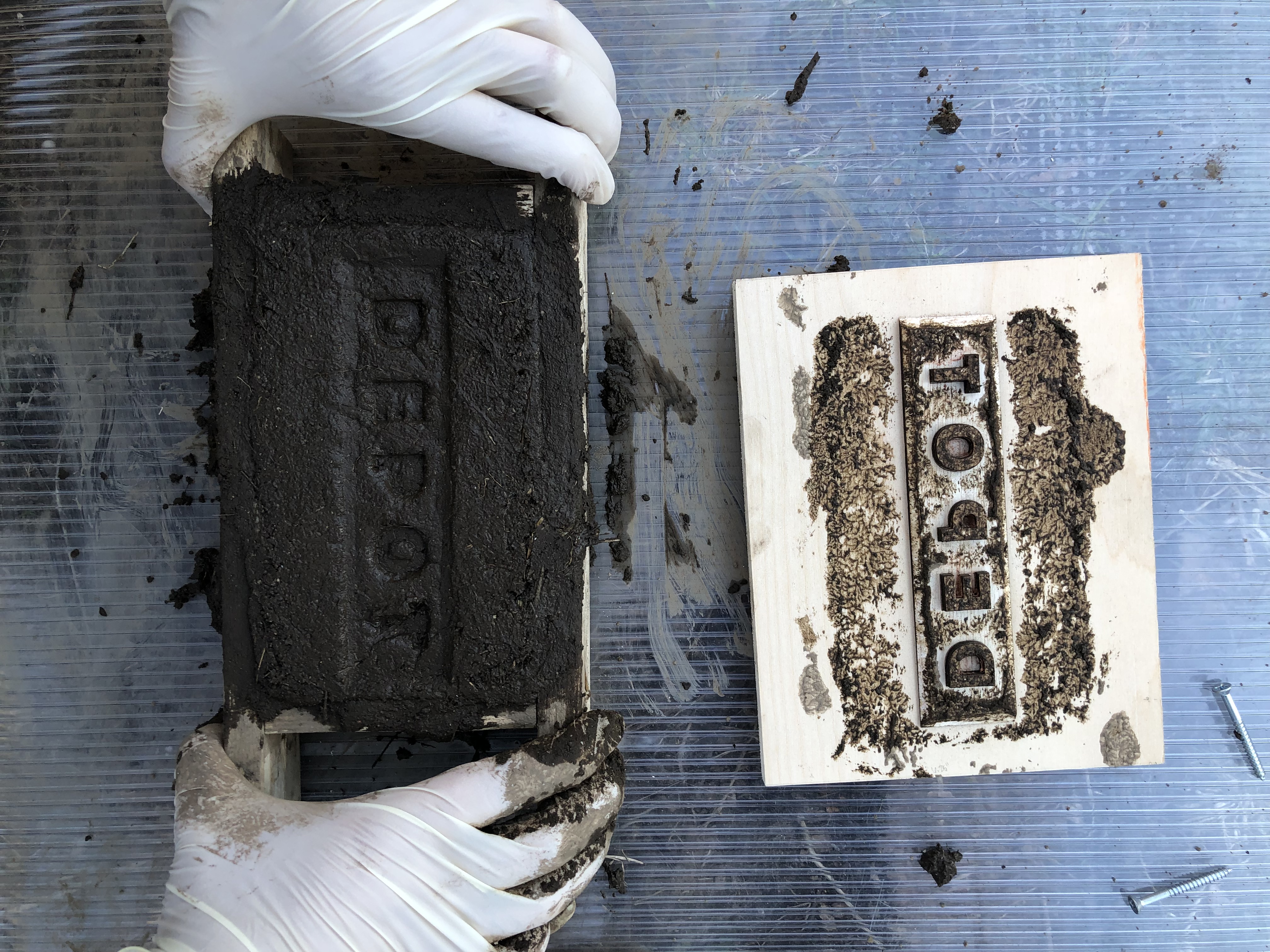
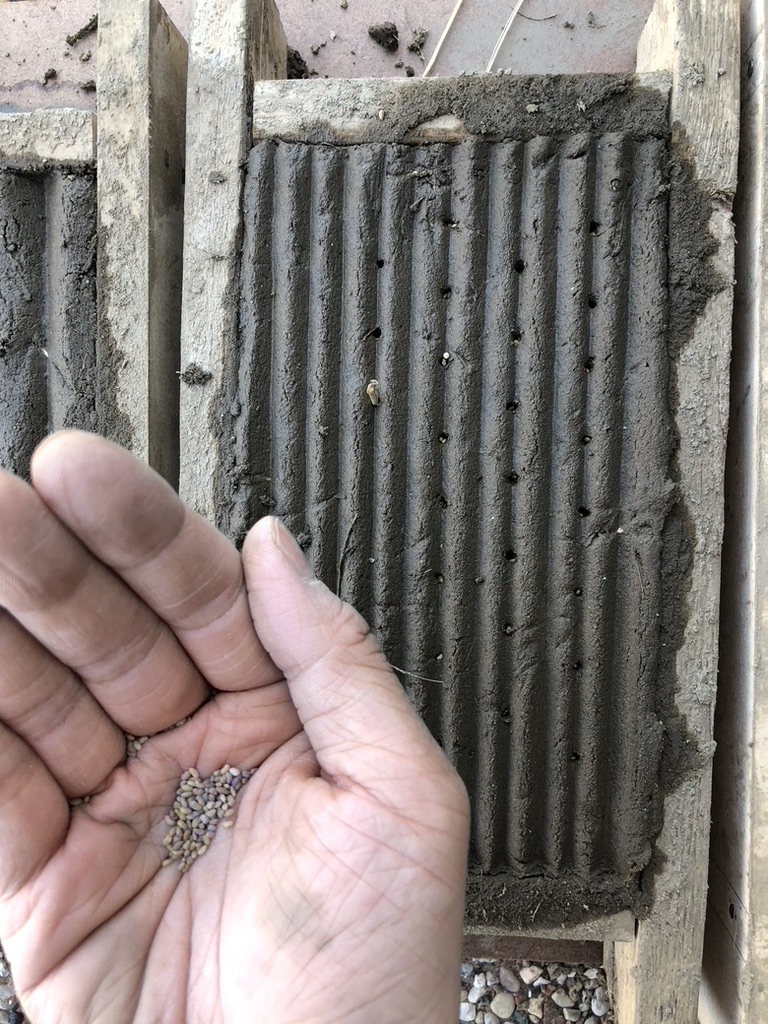
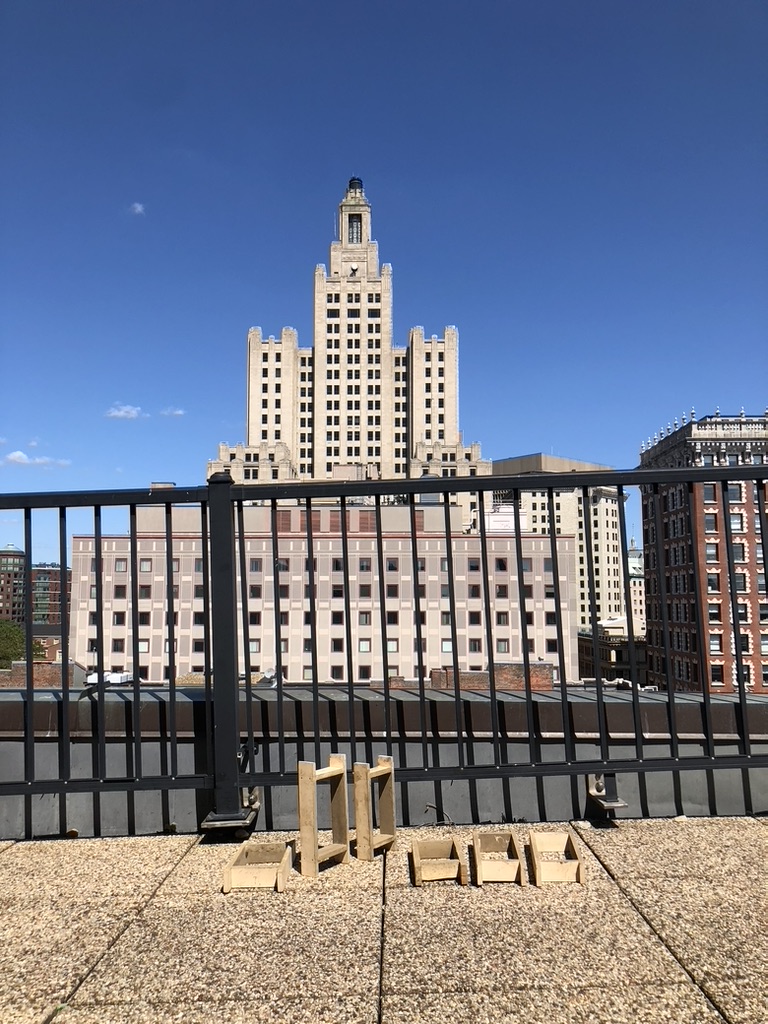
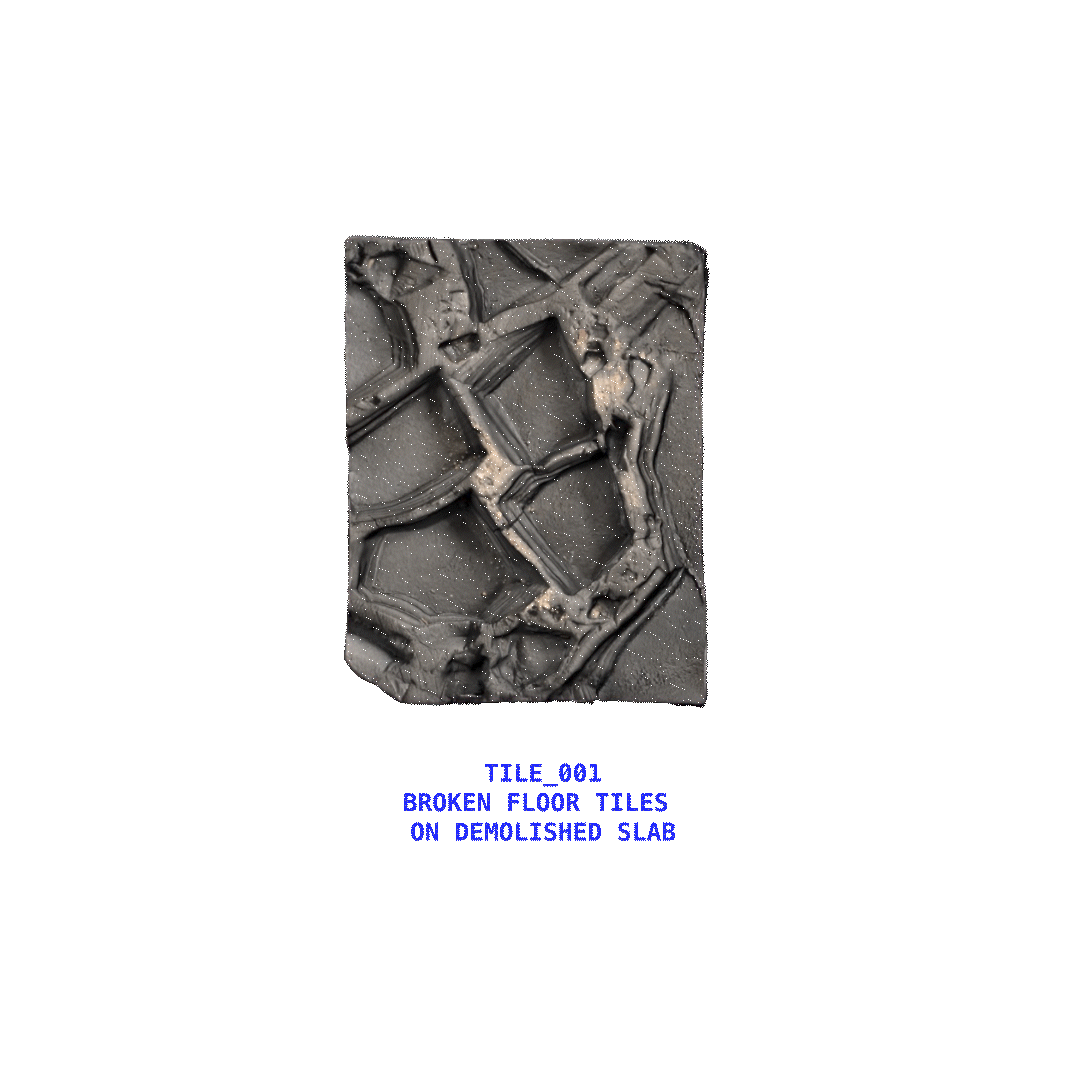
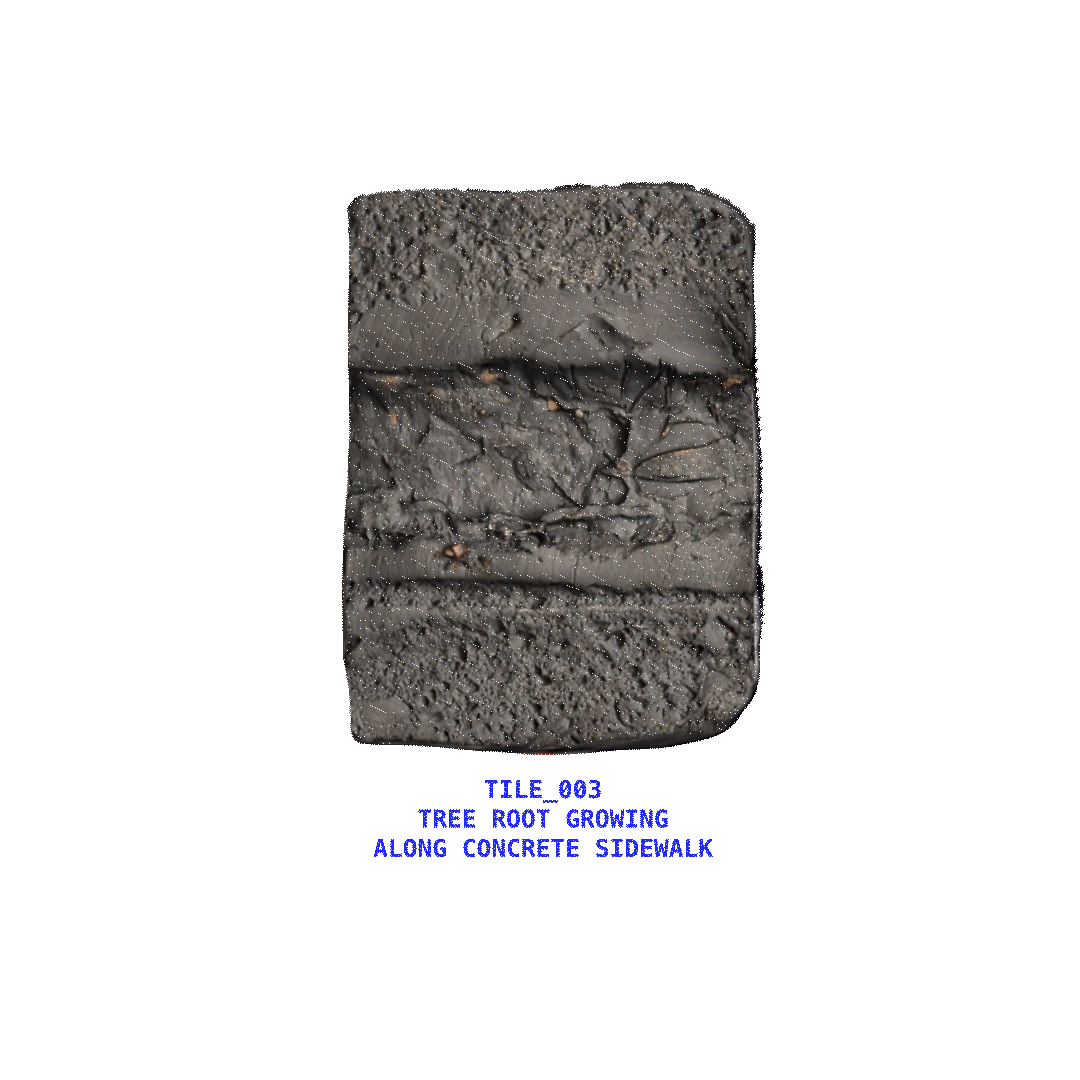
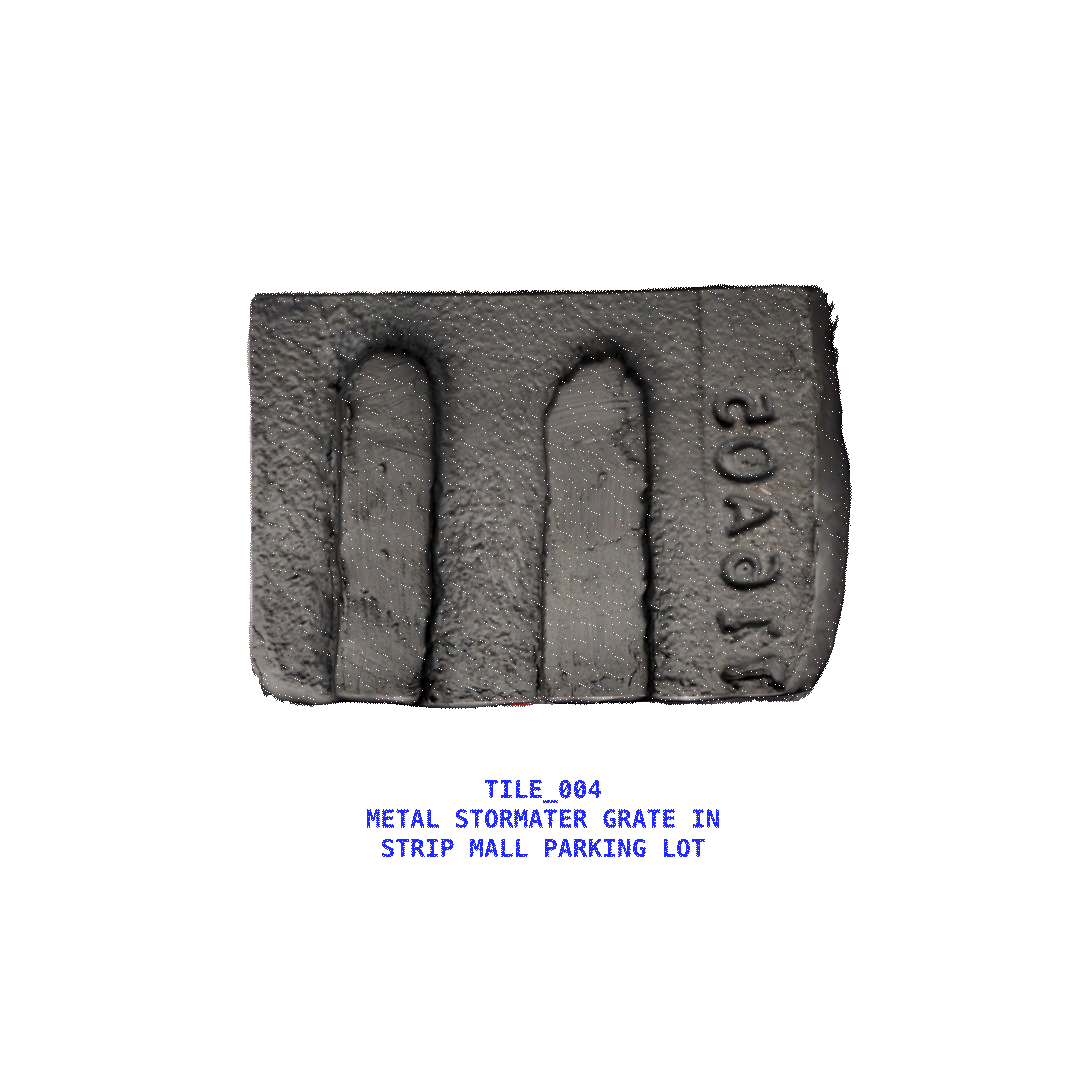
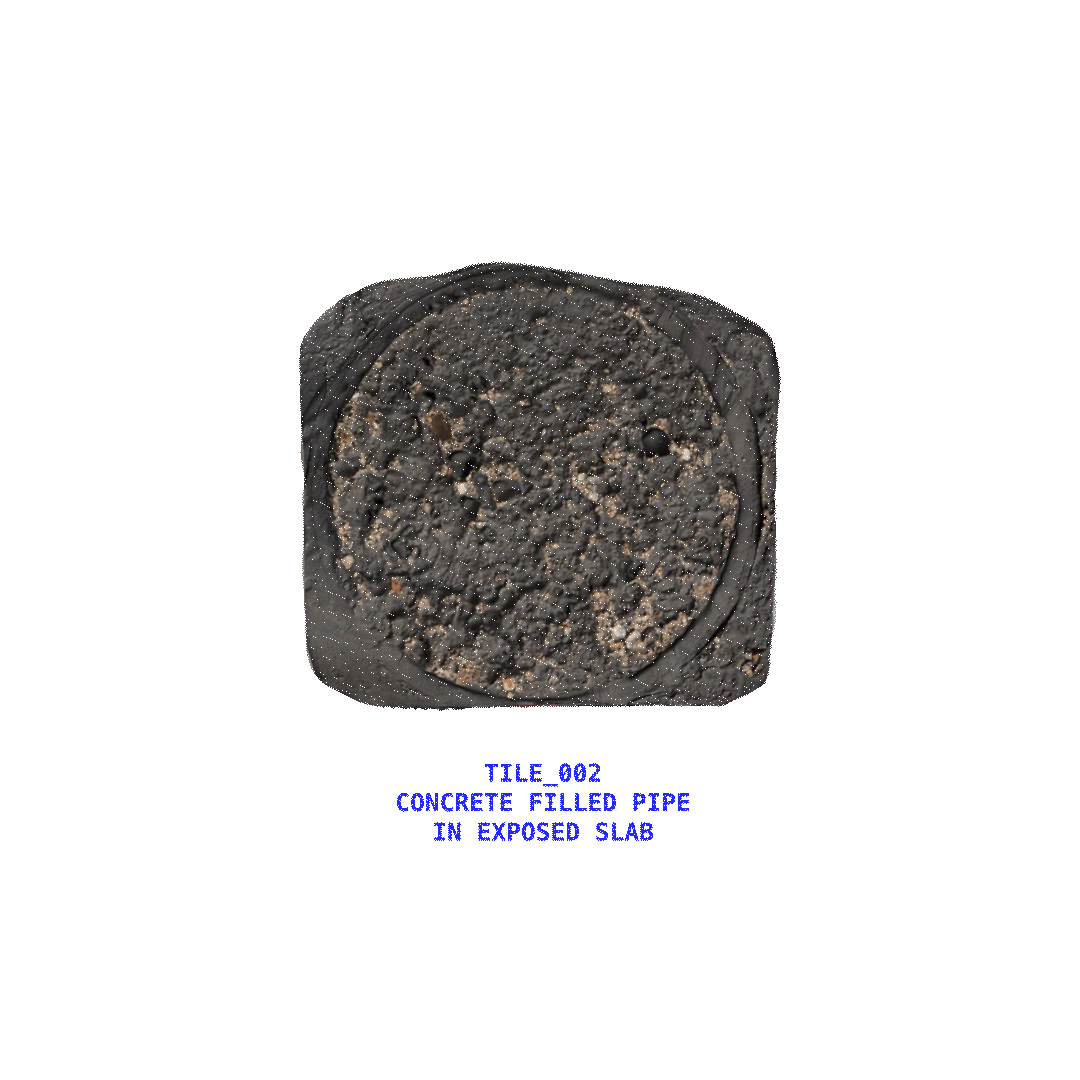

IMPERVIOUS SURFACE TILE
FLOOR MODEL*
Concrete & asphalt have formed an extensive crust over the surface of the earth, rendering cities impervious, flood-prone, and incresingly hot. These materials are products of modernity and signal ‘progress’ and ‘economic growth’ in the form of highways, freeways, sprawling parking lots.
Nevertheless, plants spring up between the cracks. Designers and local depaving movements alike push for more permeable, cooler ground cover in their communities.
Can architecture exercise an alternative imagination of the ground — one that stages a phasing-out of petrocapital and urban heat islands, toward more socially and environmentally resilient ends?
PRODUCT
These clay tiles are direct 1:1 prints of hard ground conditions in cities that face urban flooding — including Providence, Houston, and Venice.
*Suppliers hope that this product will be discontinued by 2030 as we transition into a future where the ground is not simply a thin, infinite surface for vehicular circulation, but designed to breathe, let things grow, and adapt to environmental change.
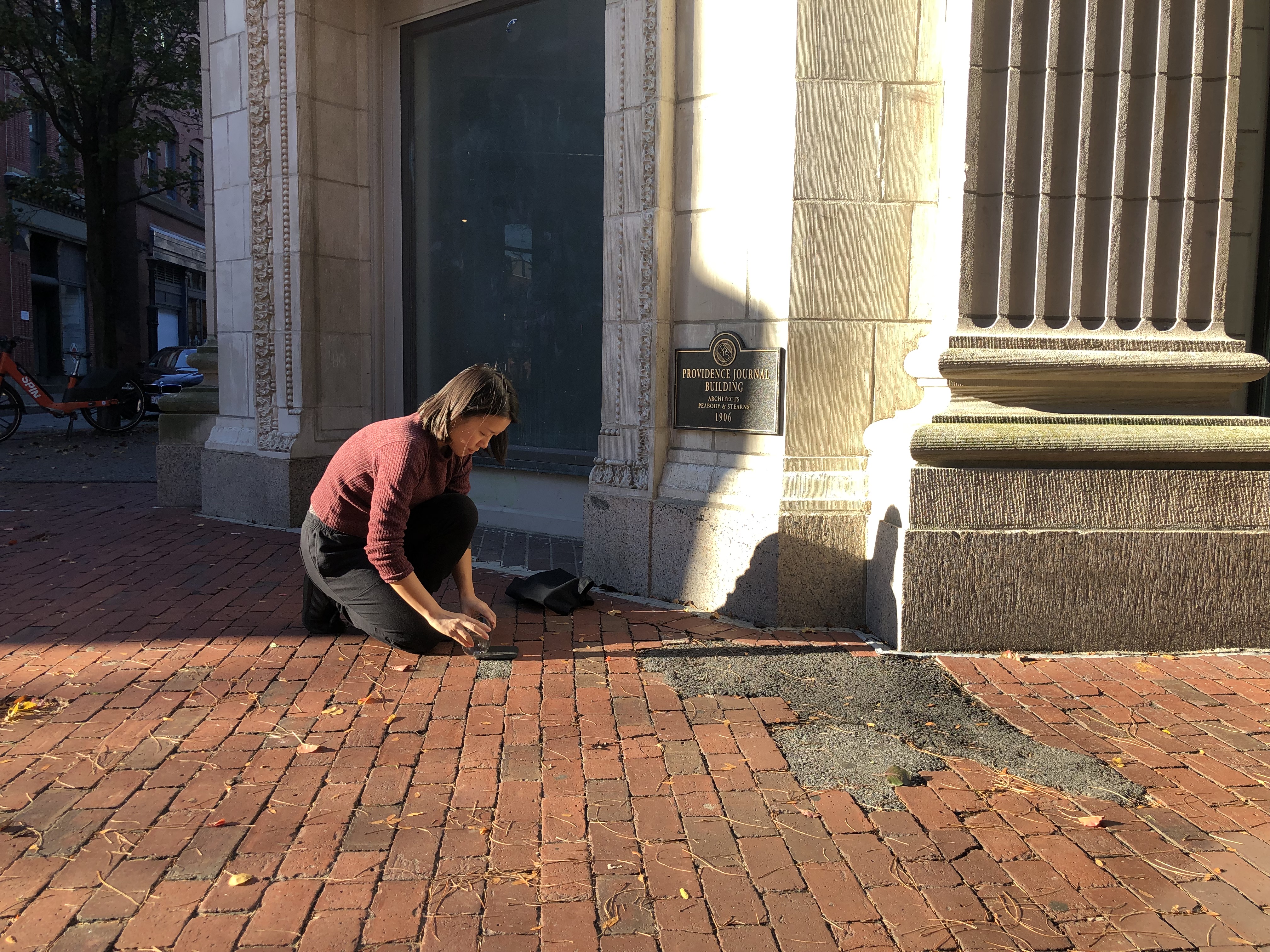
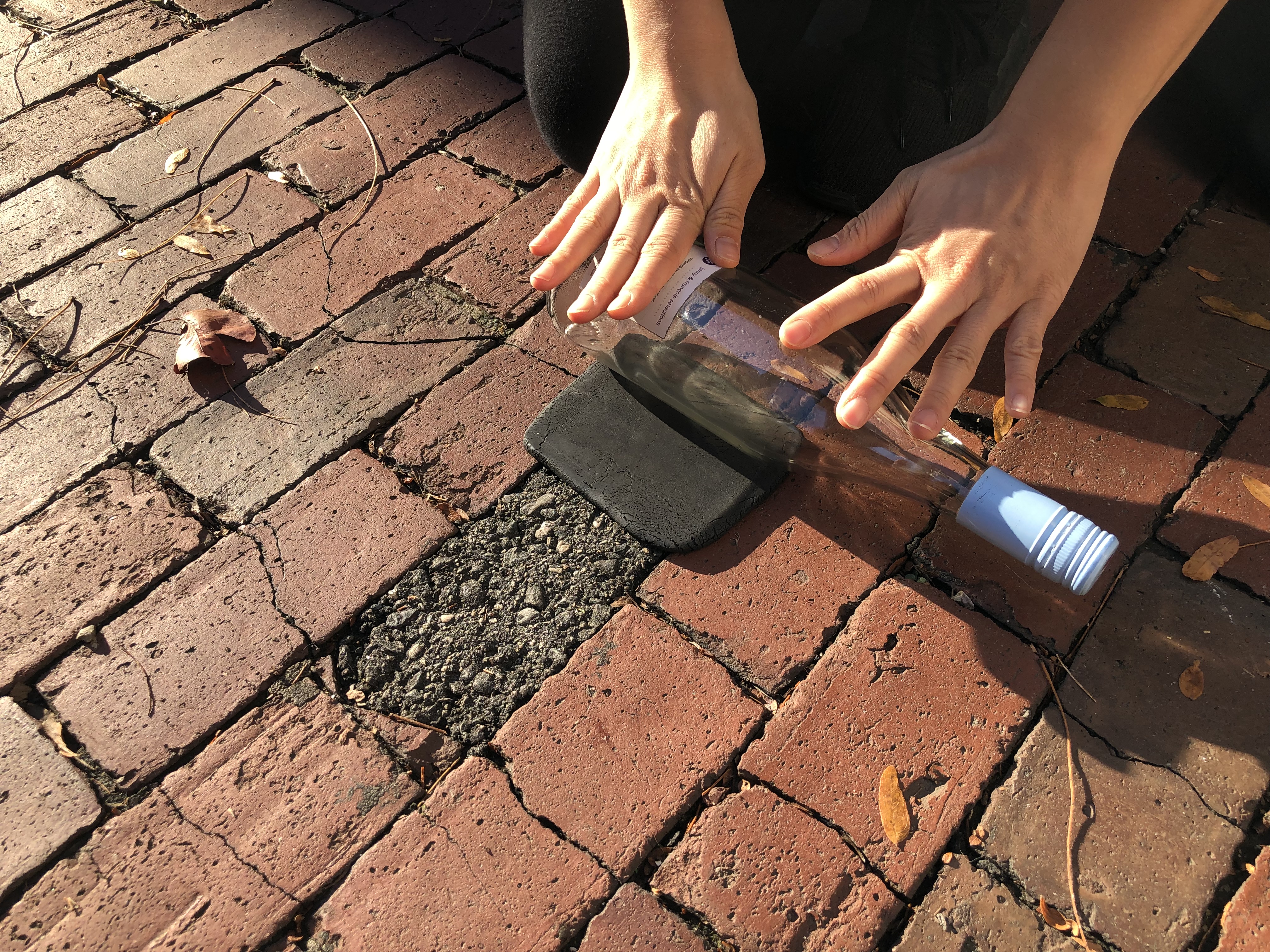
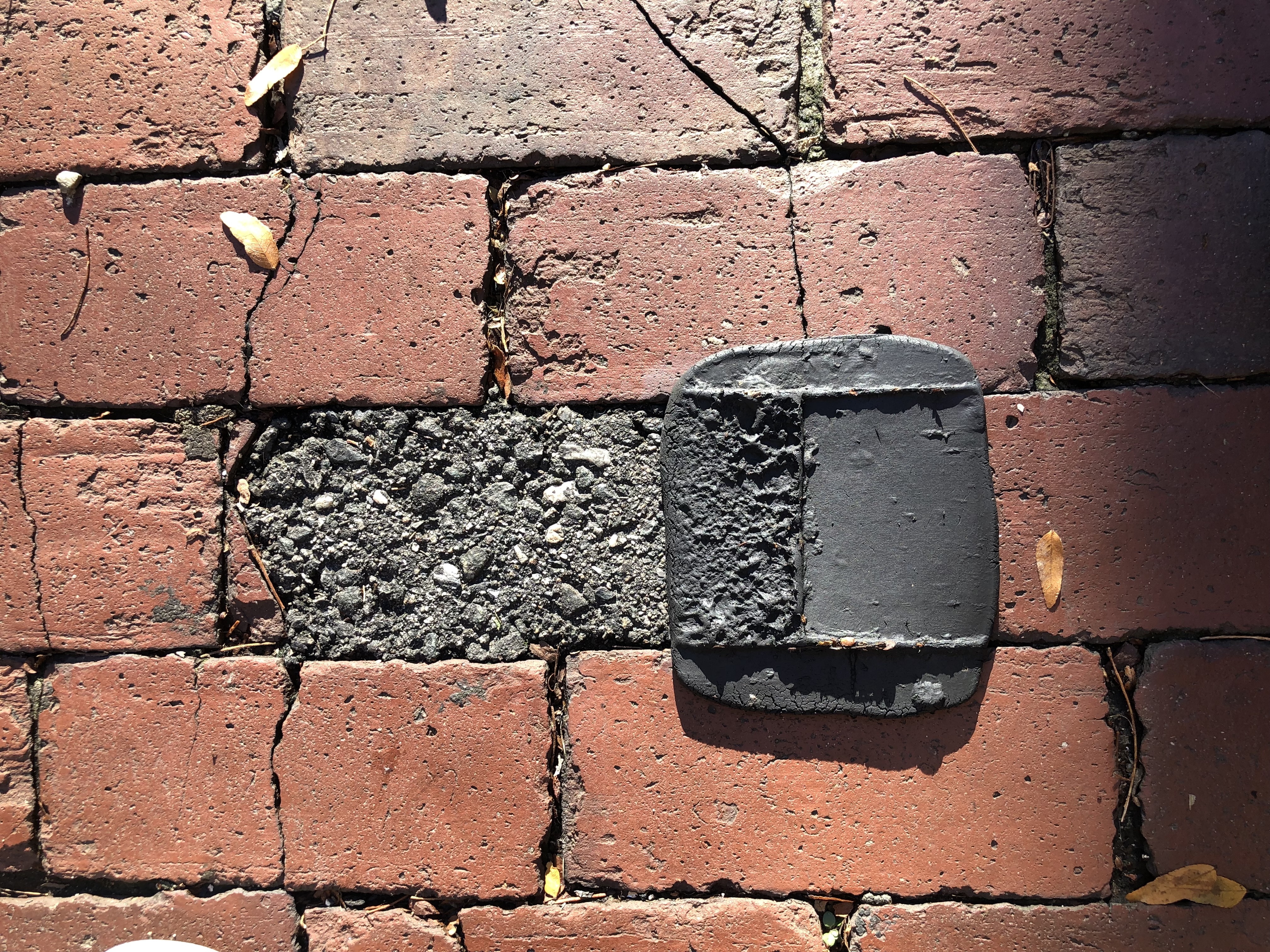
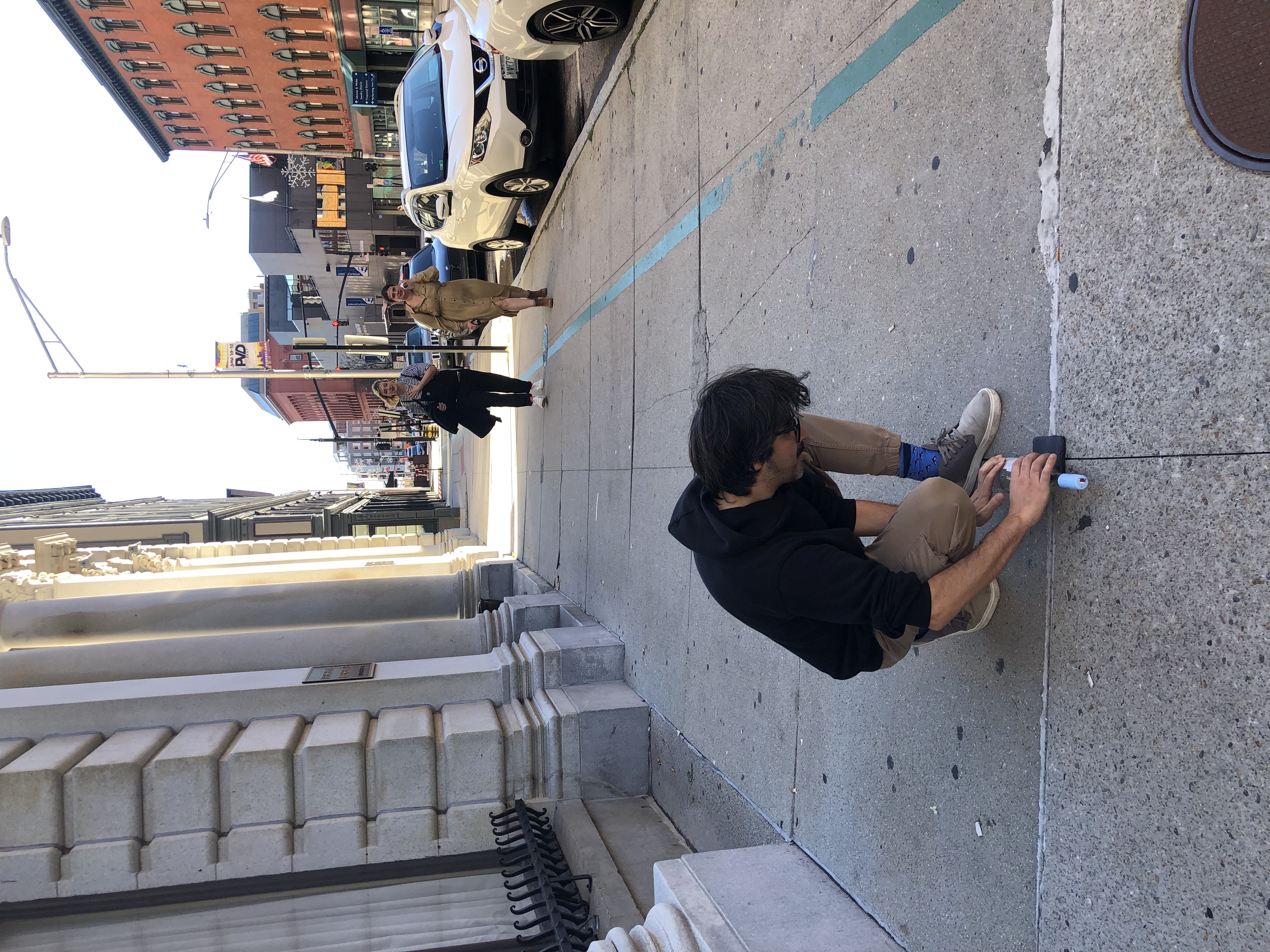
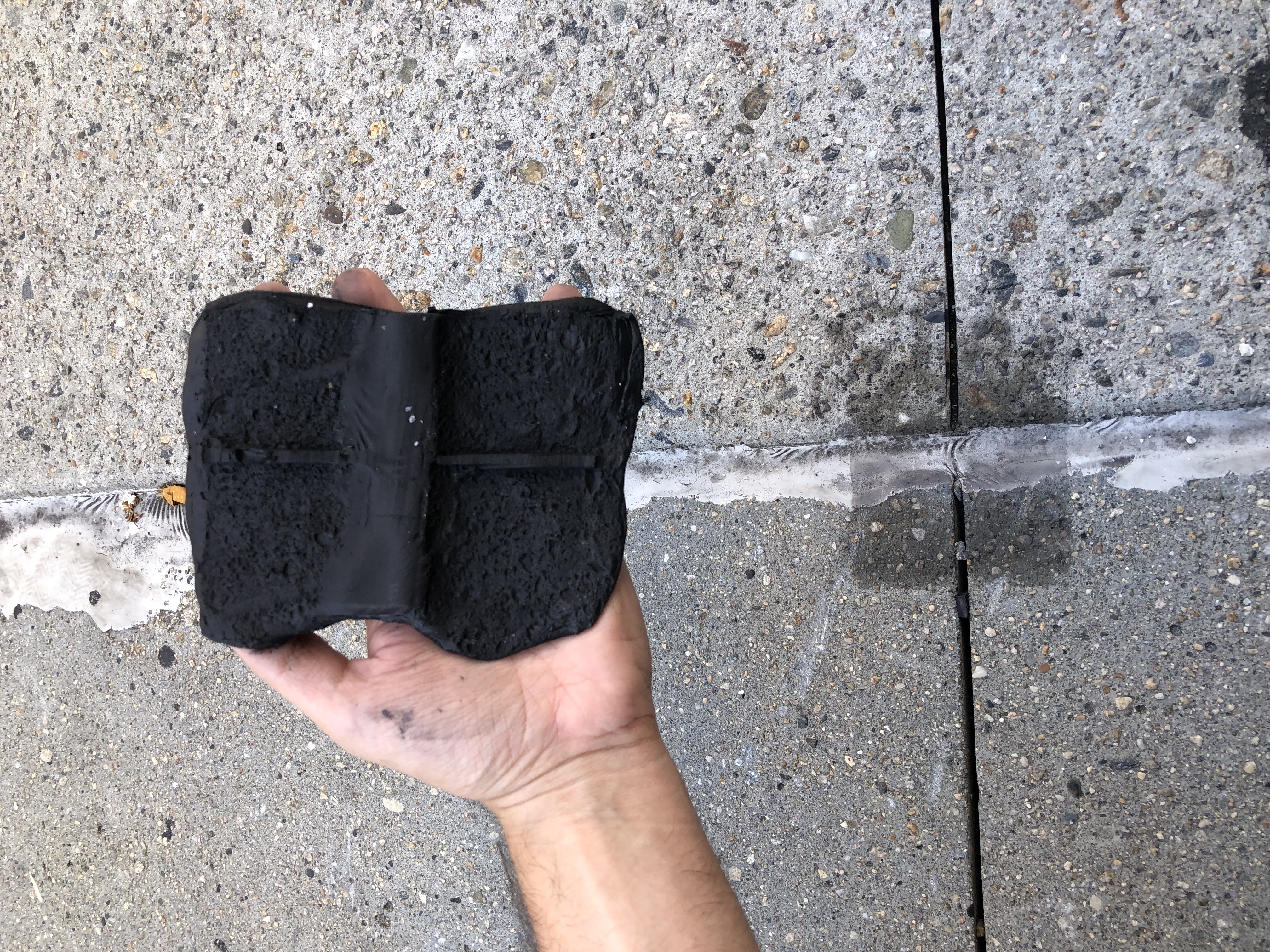
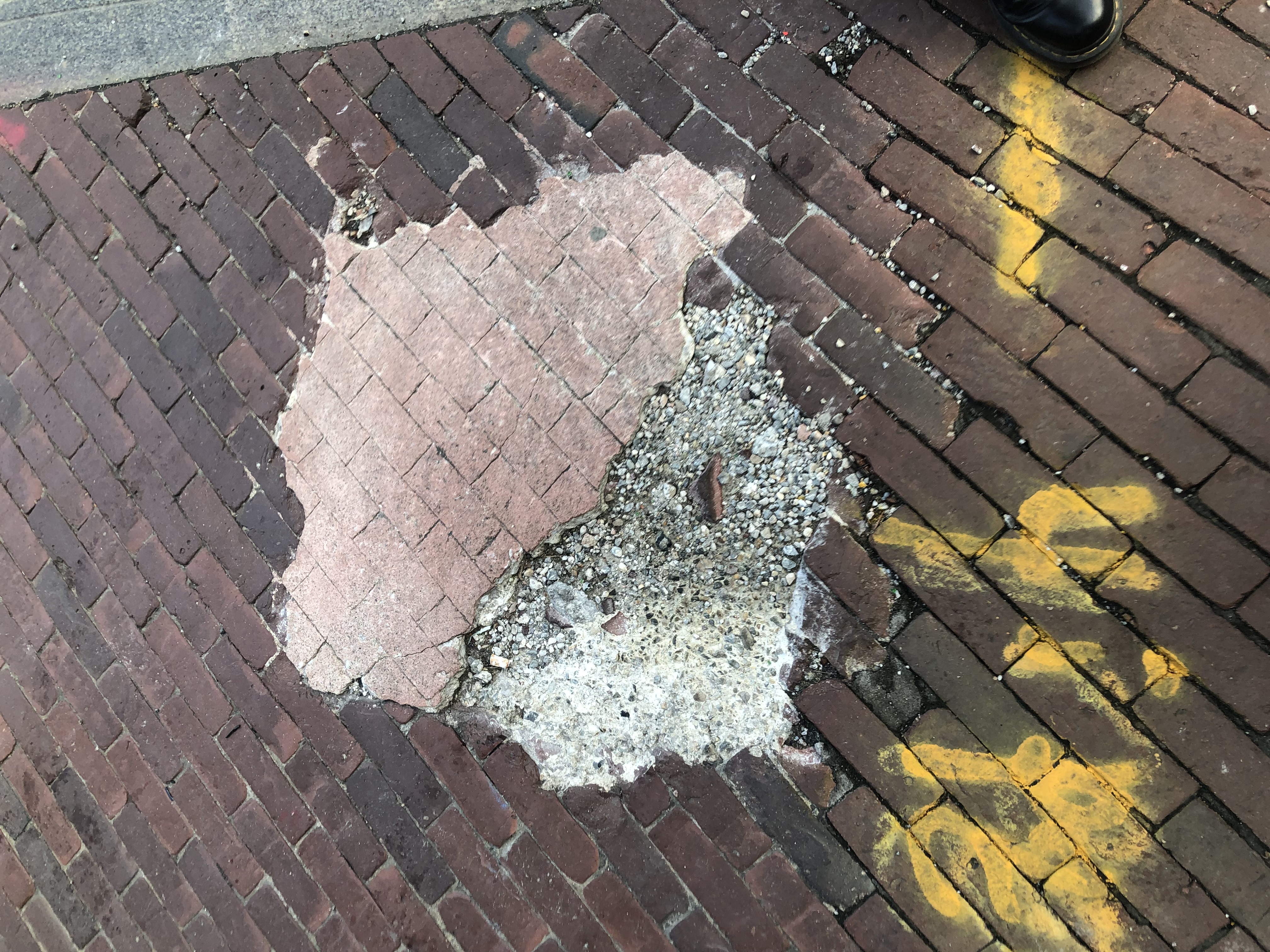



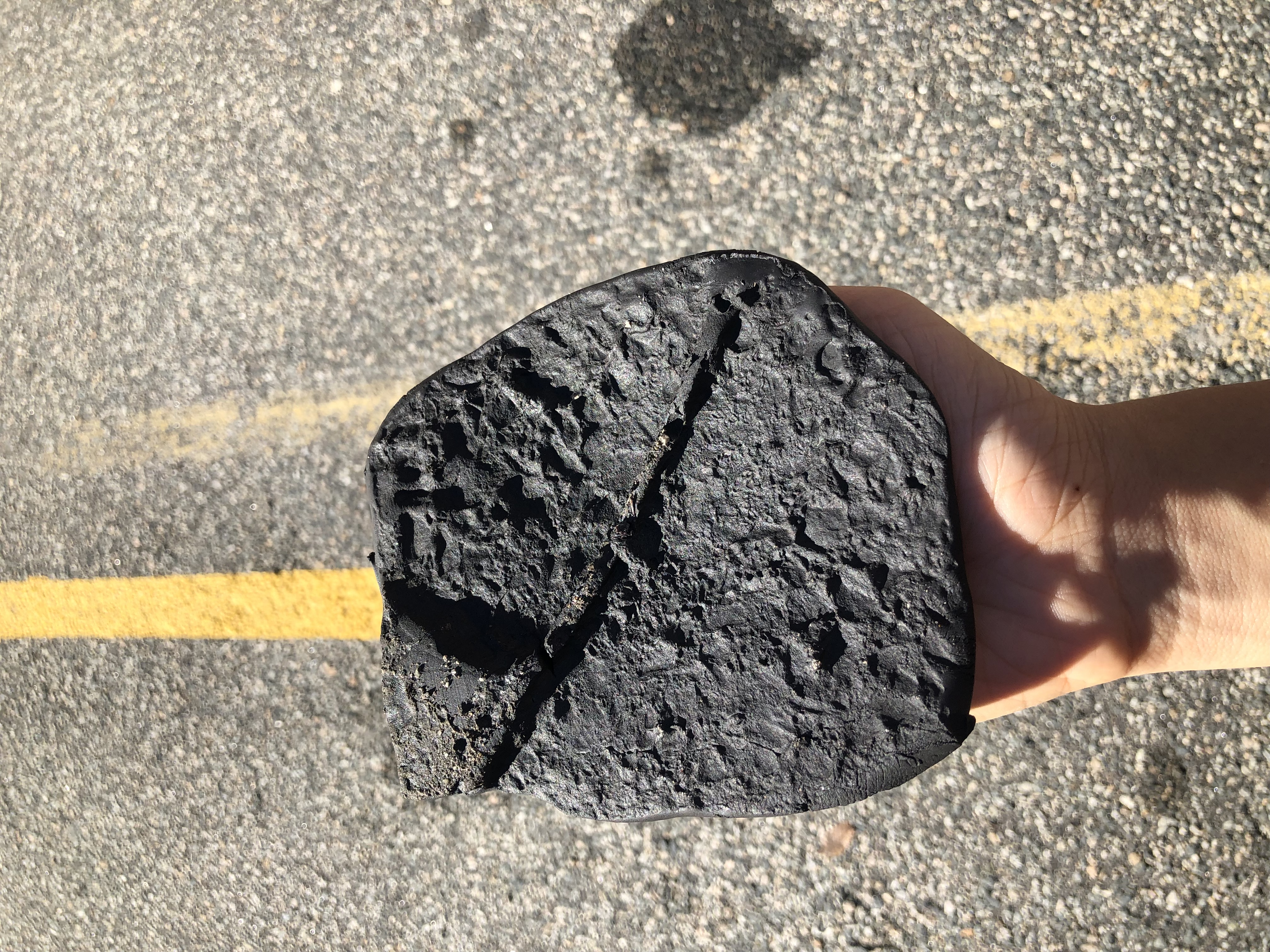

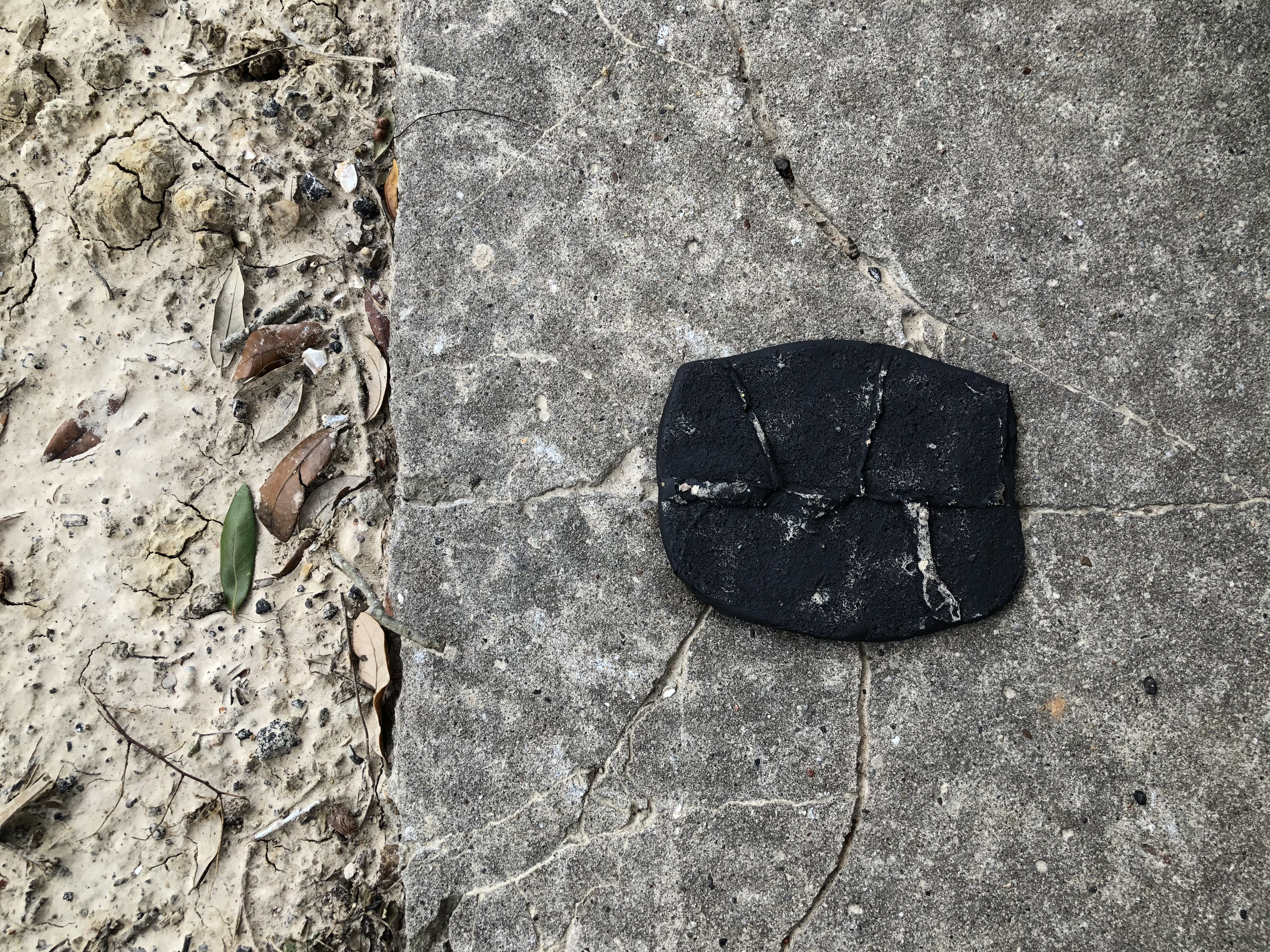

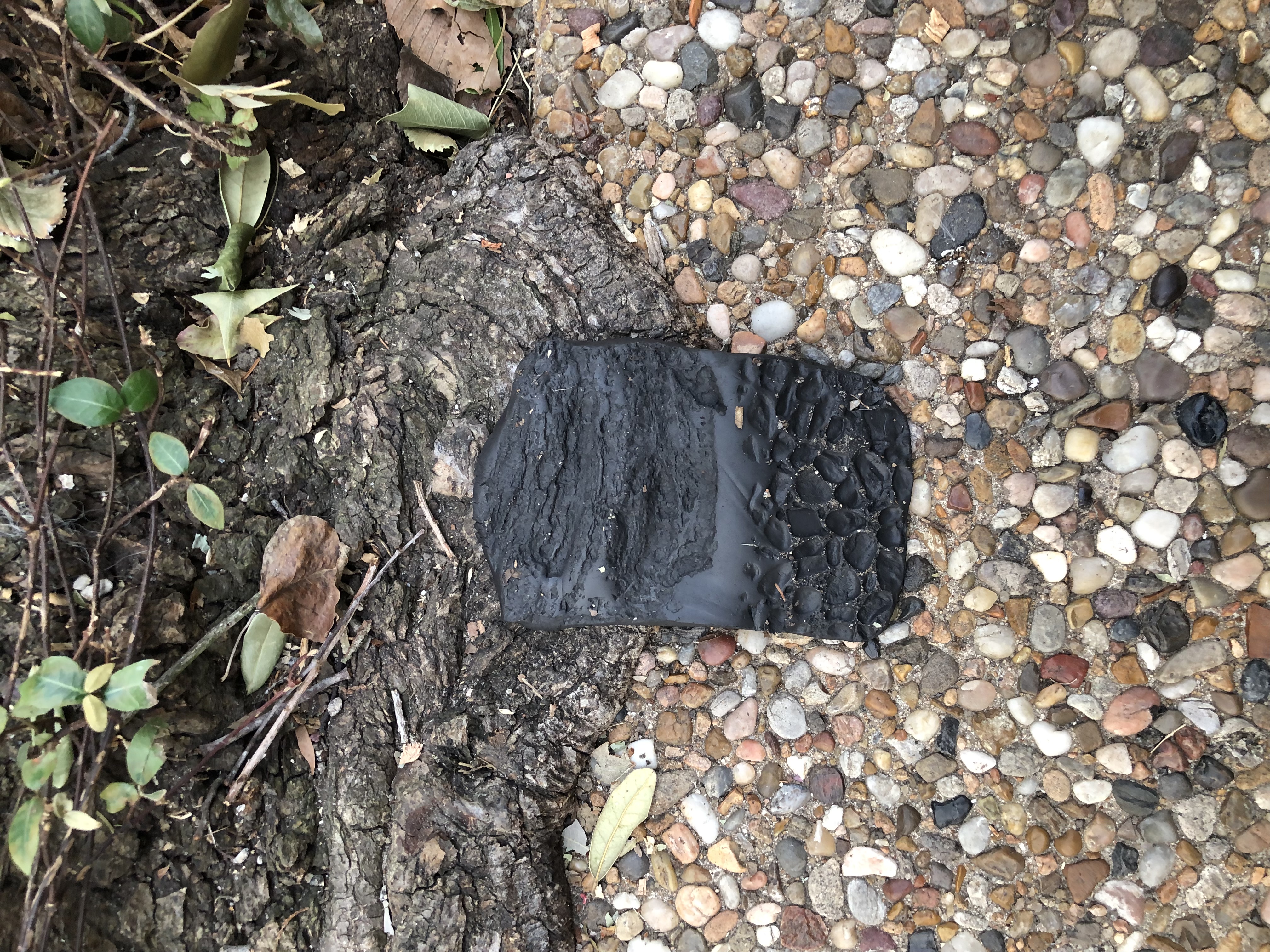

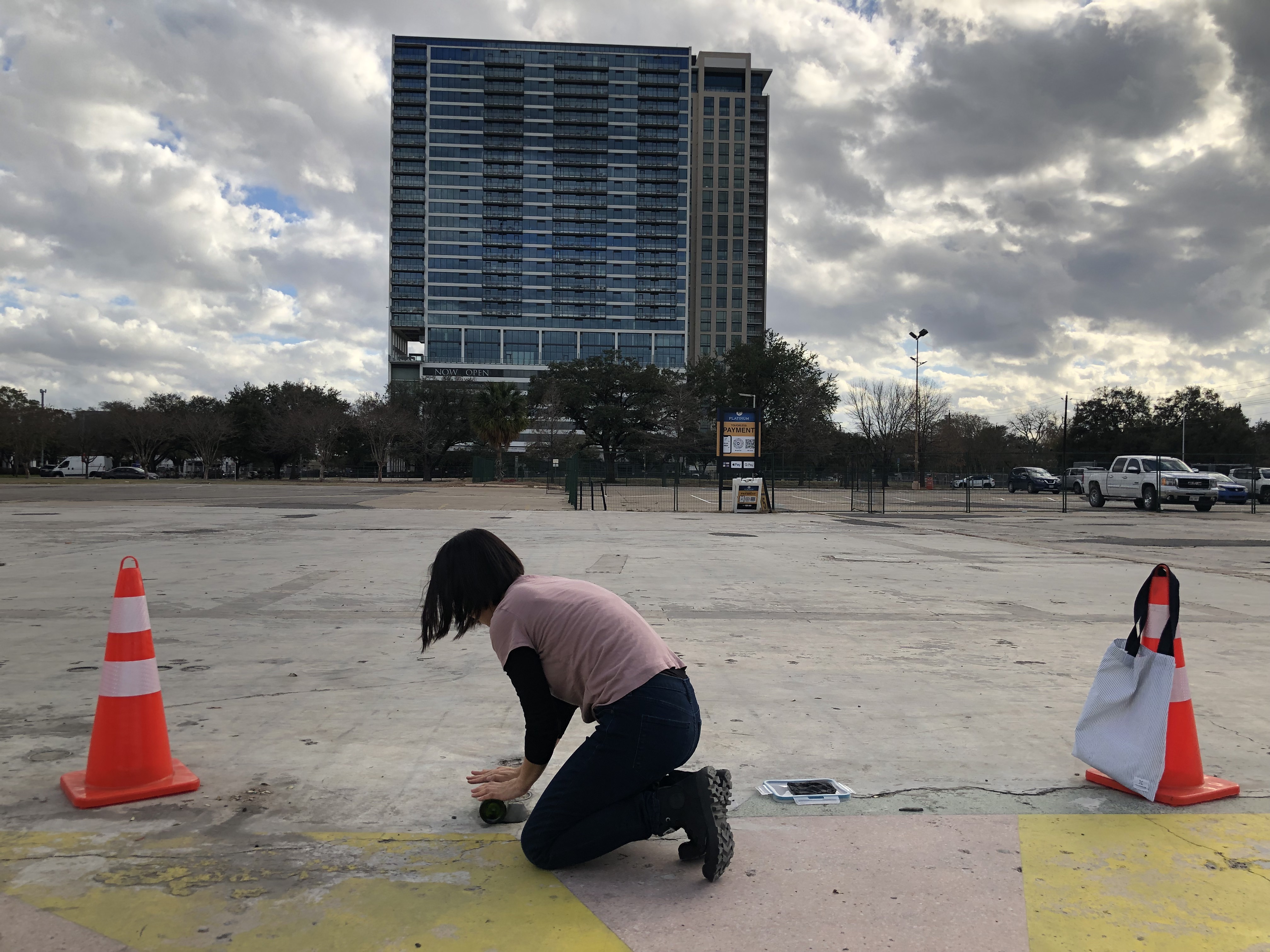
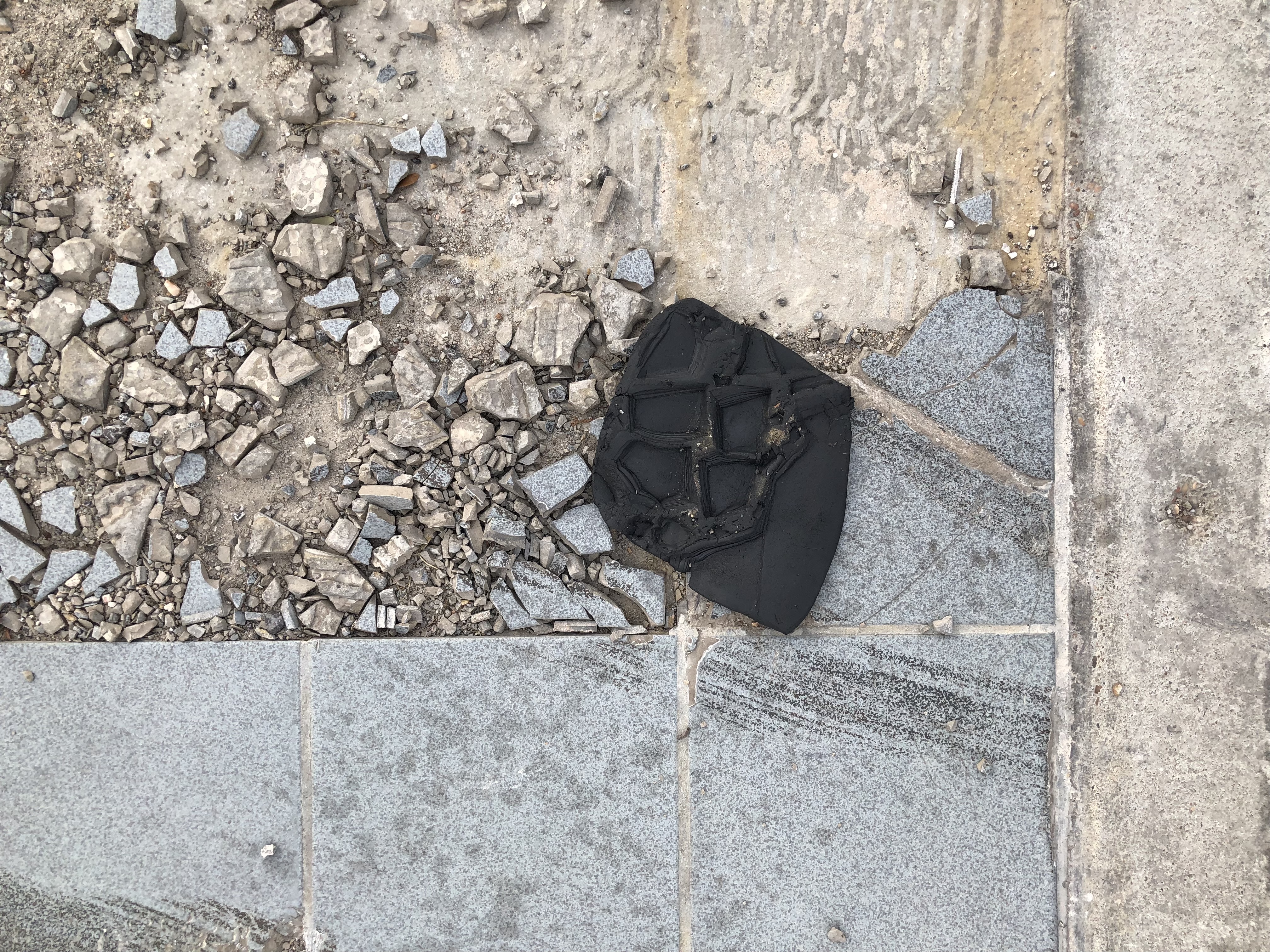
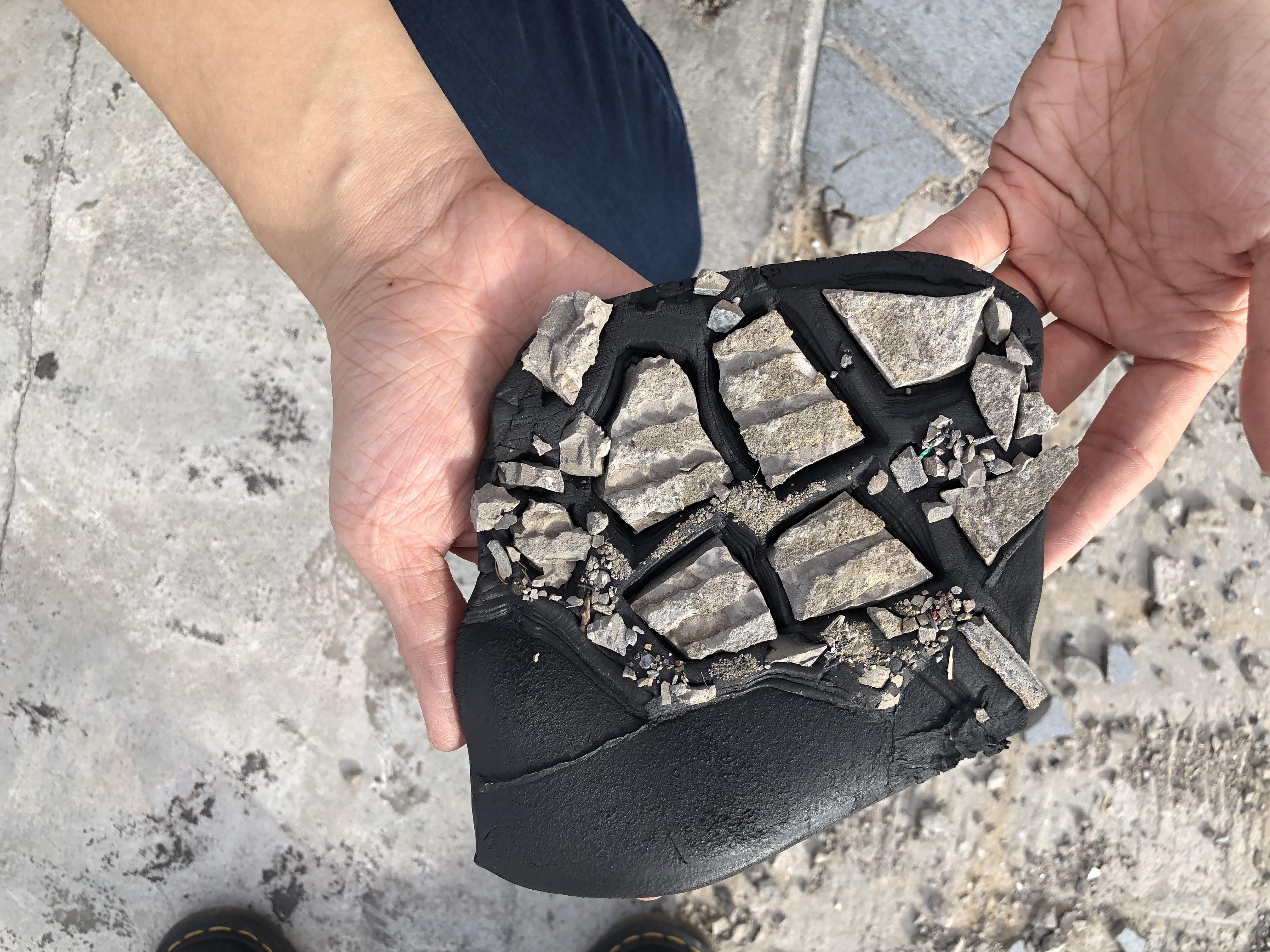
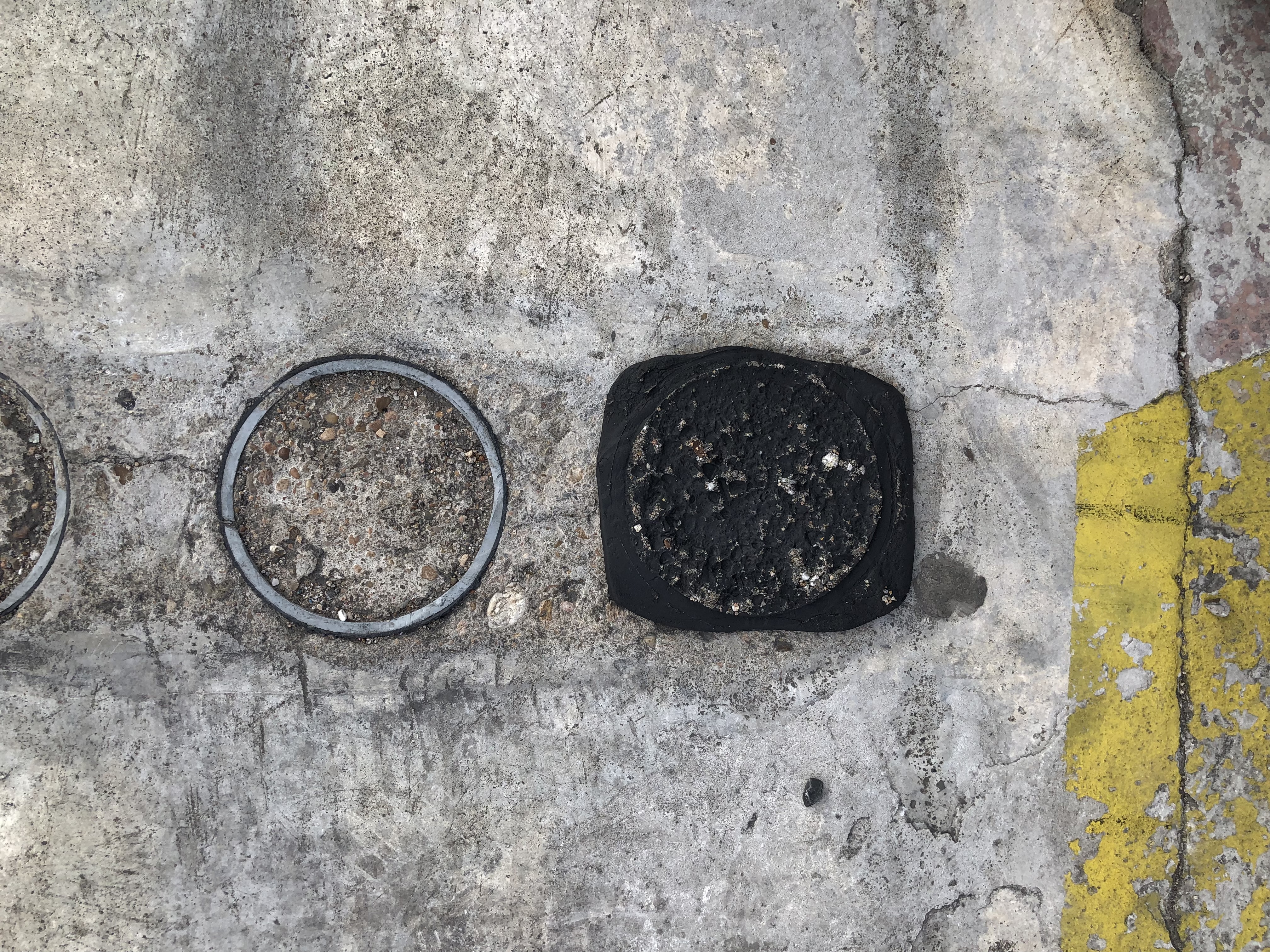
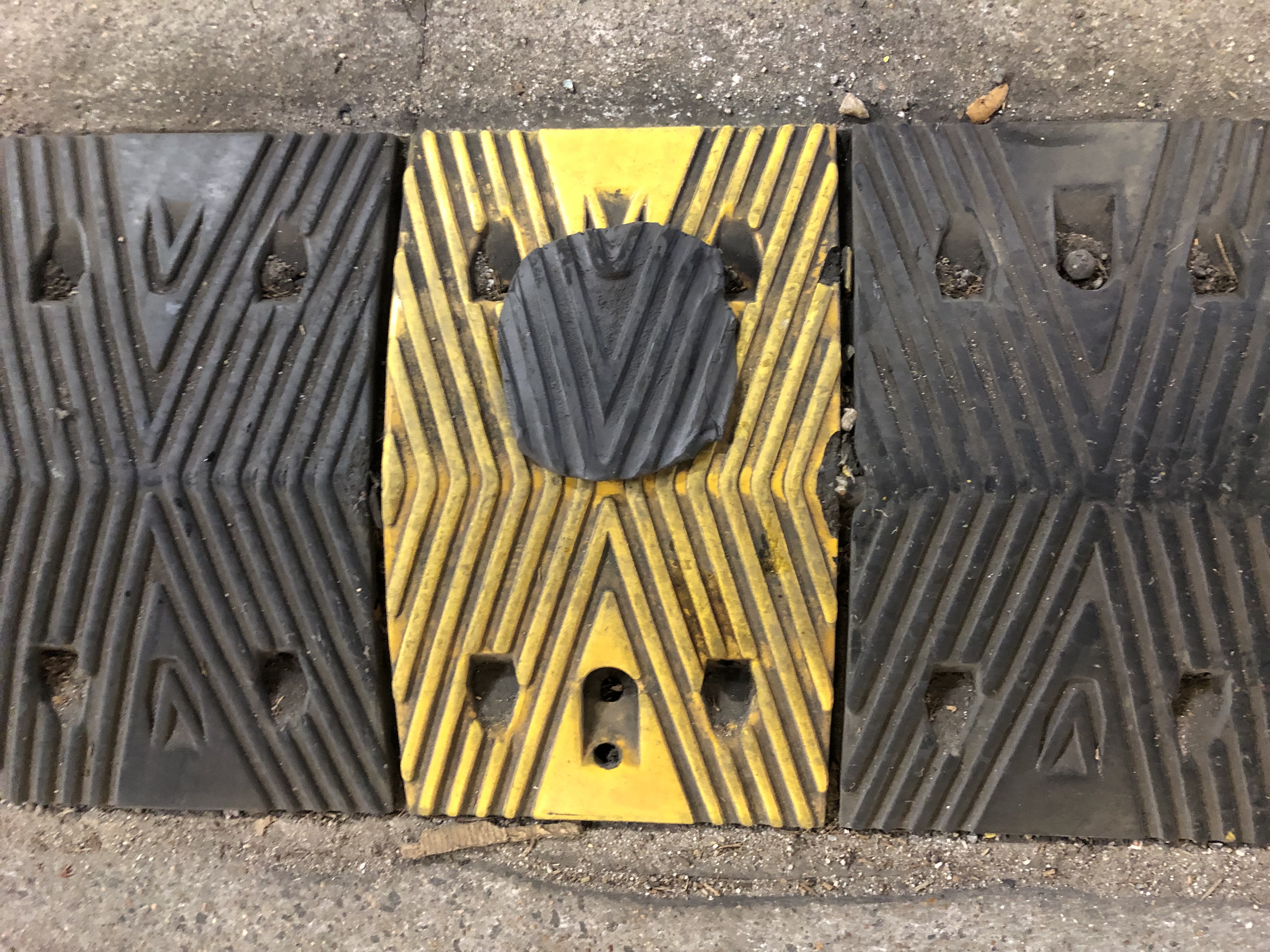
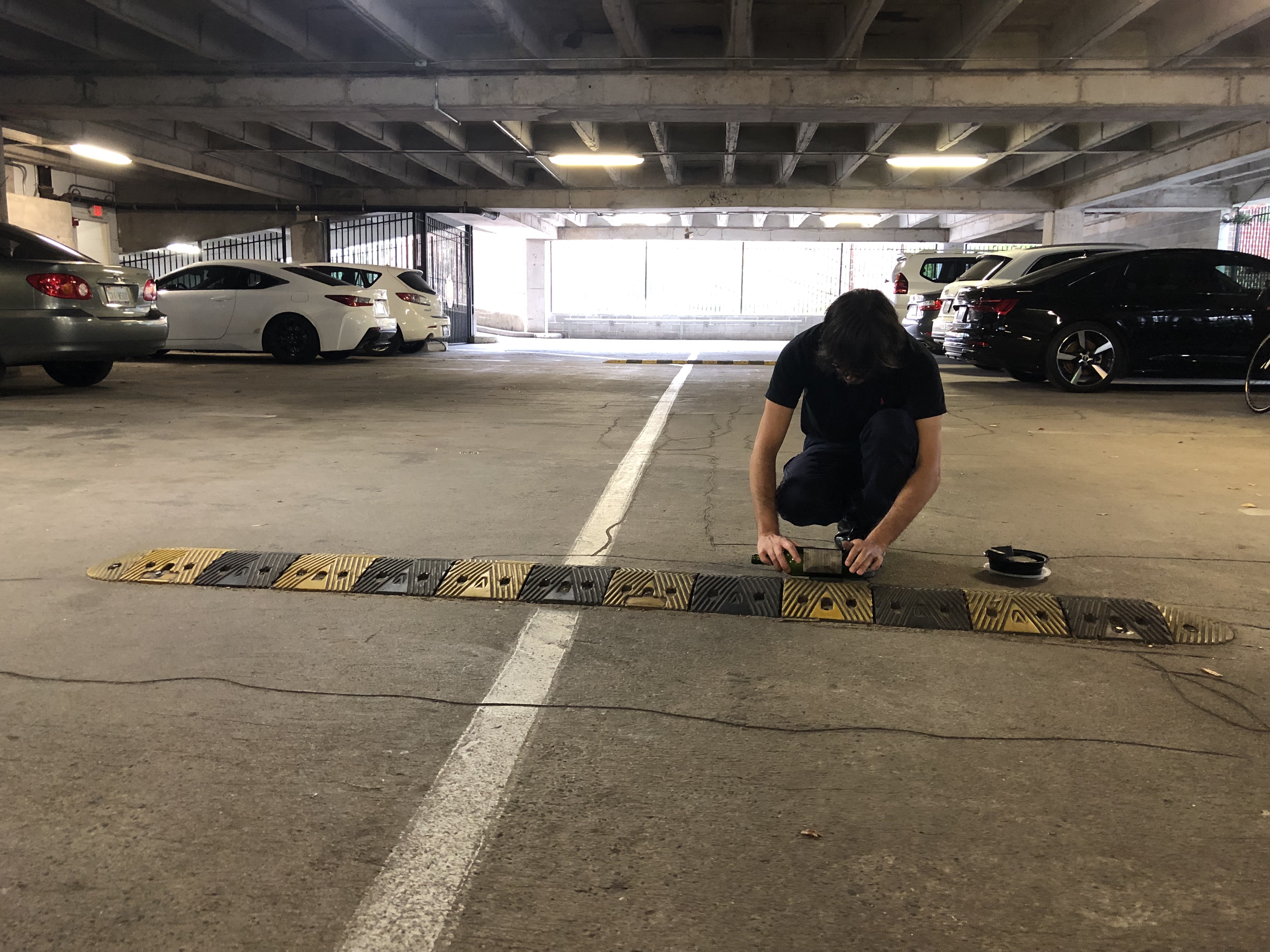
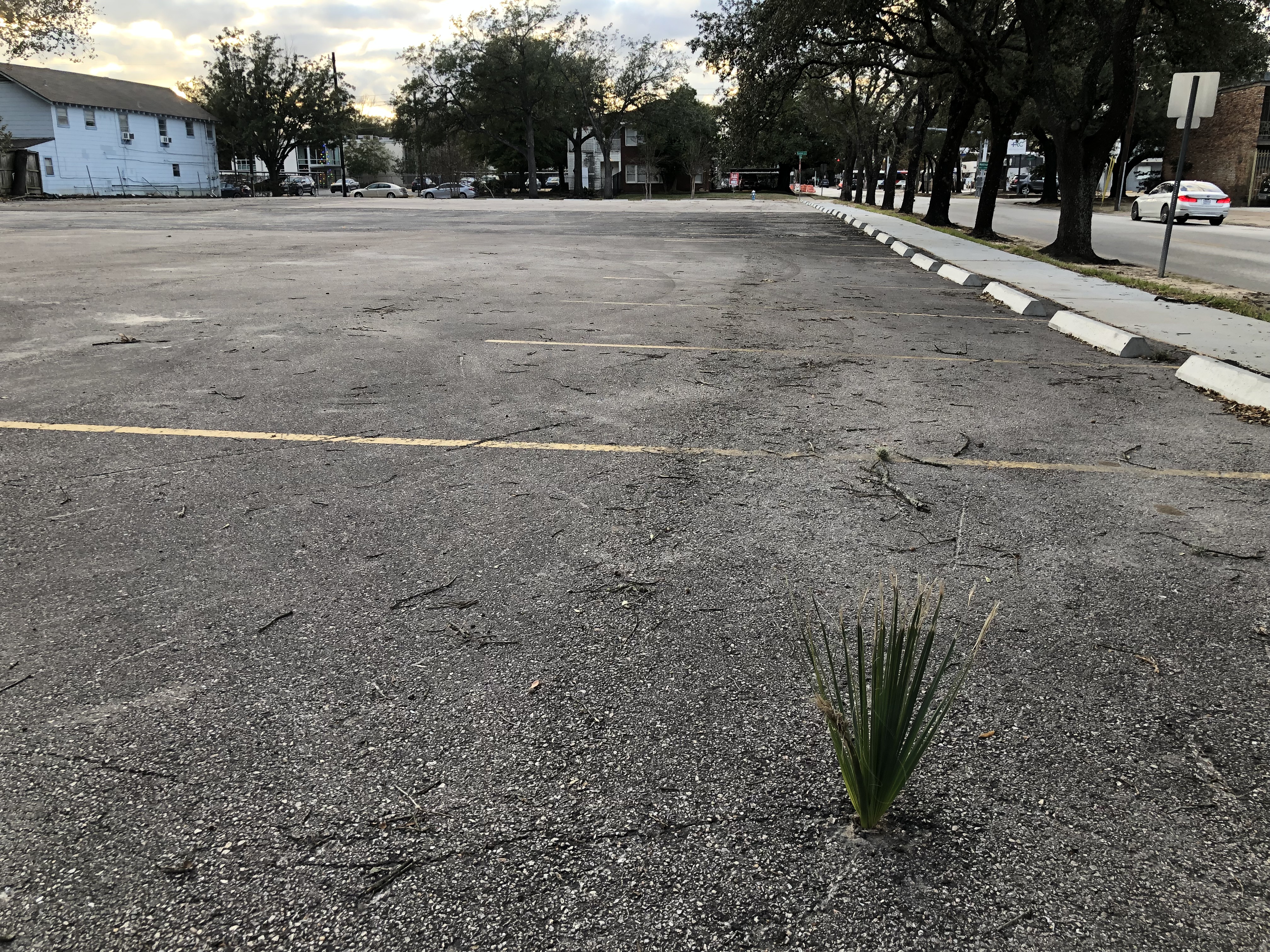
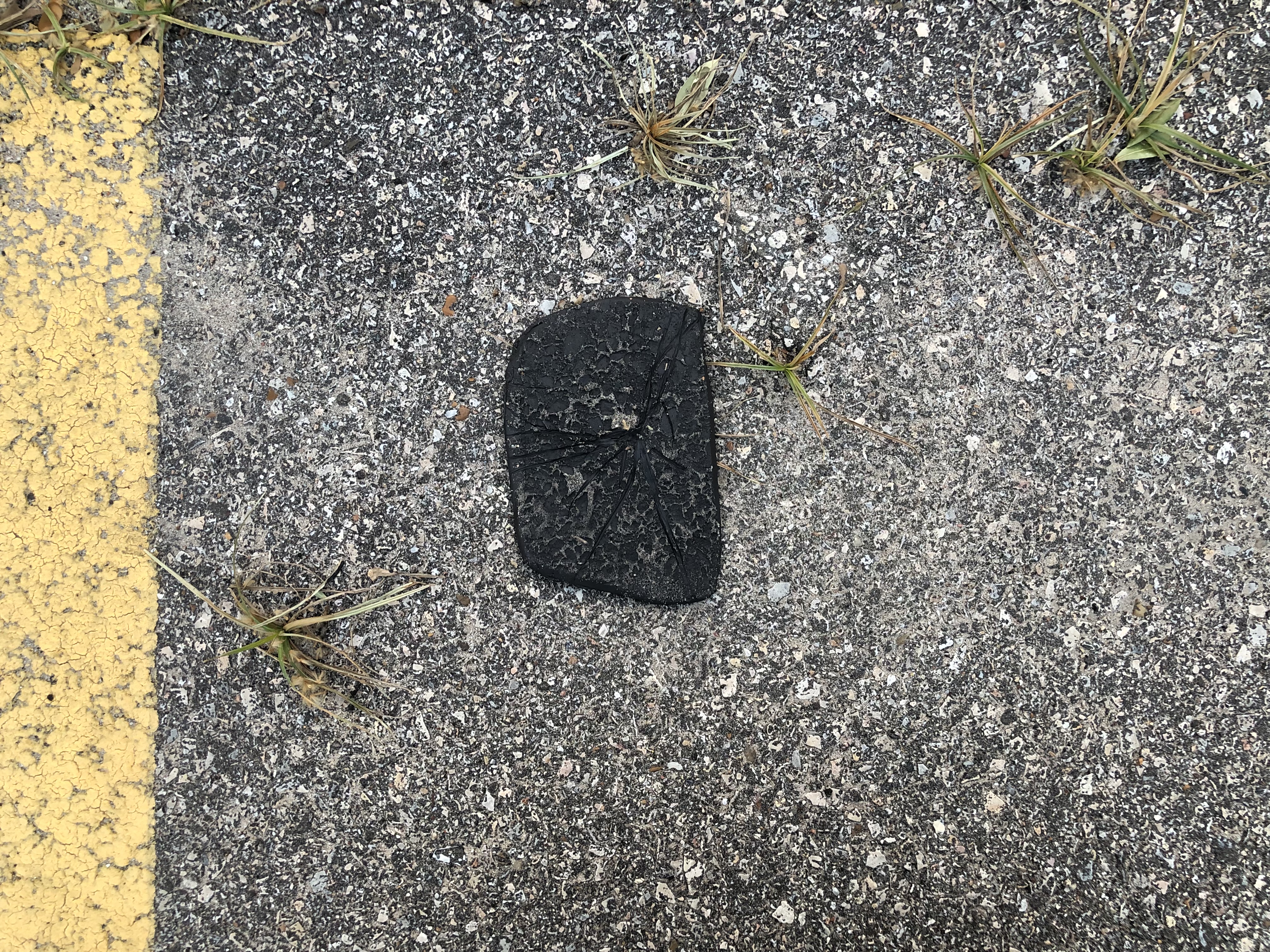
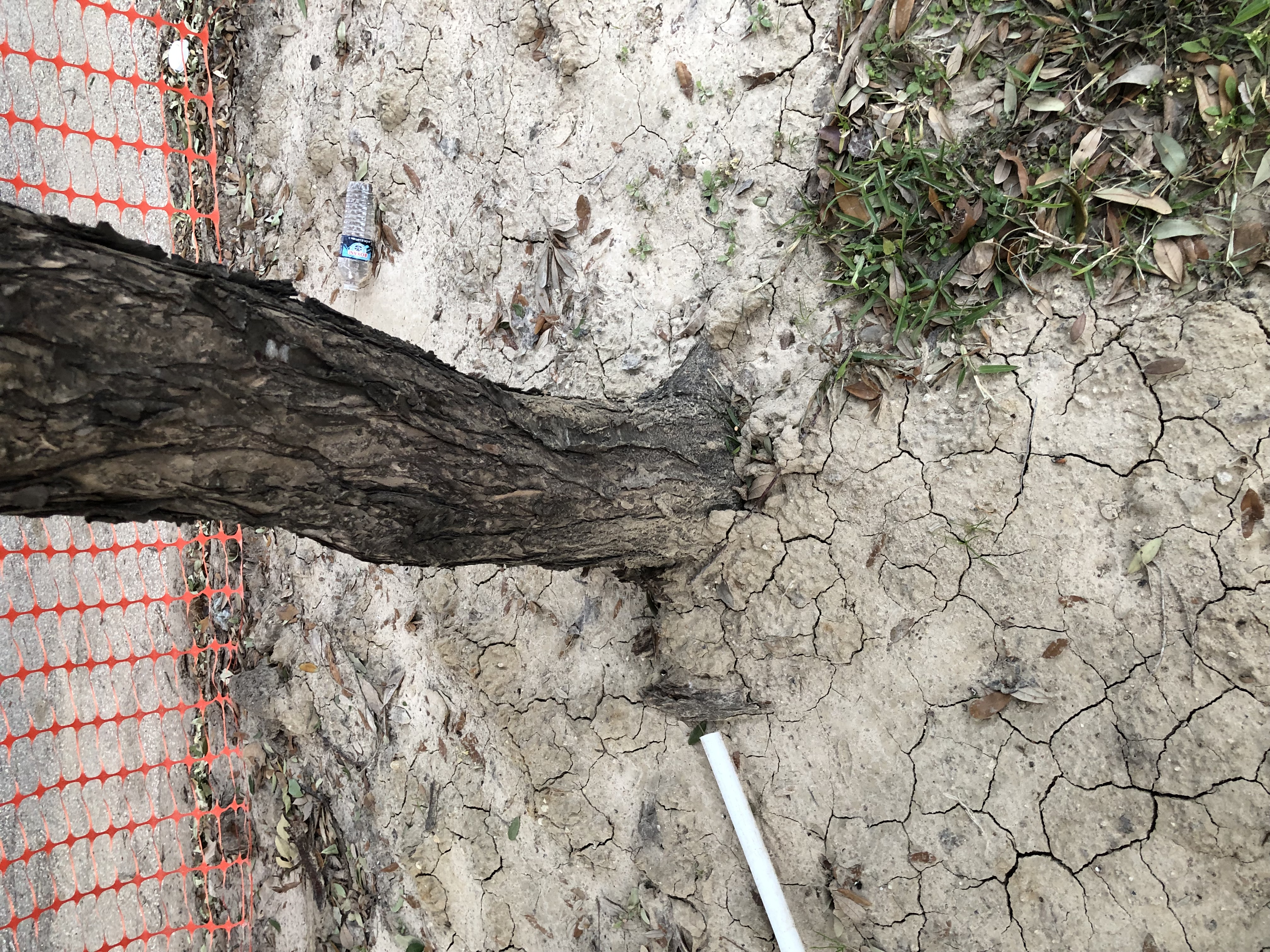



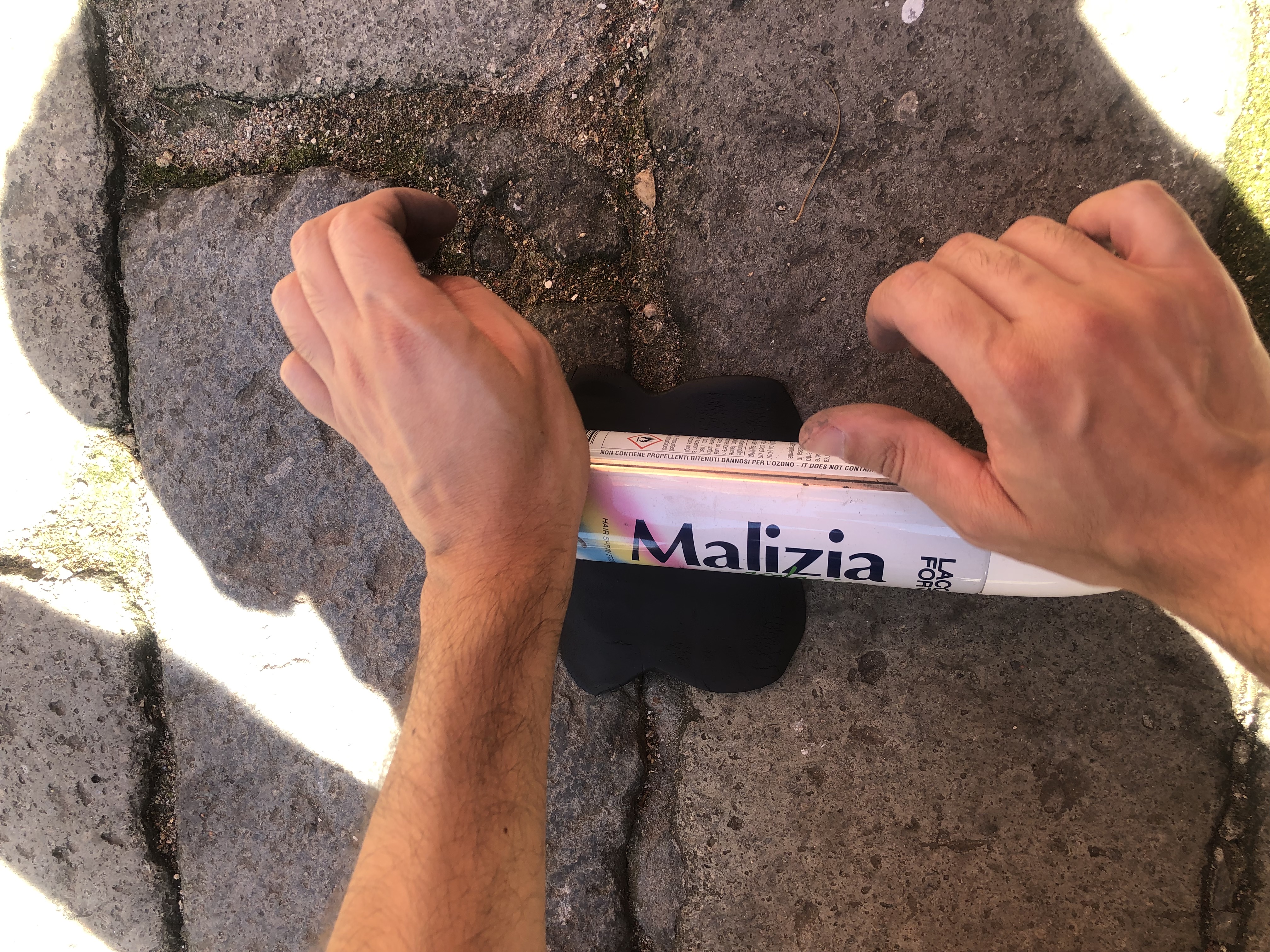
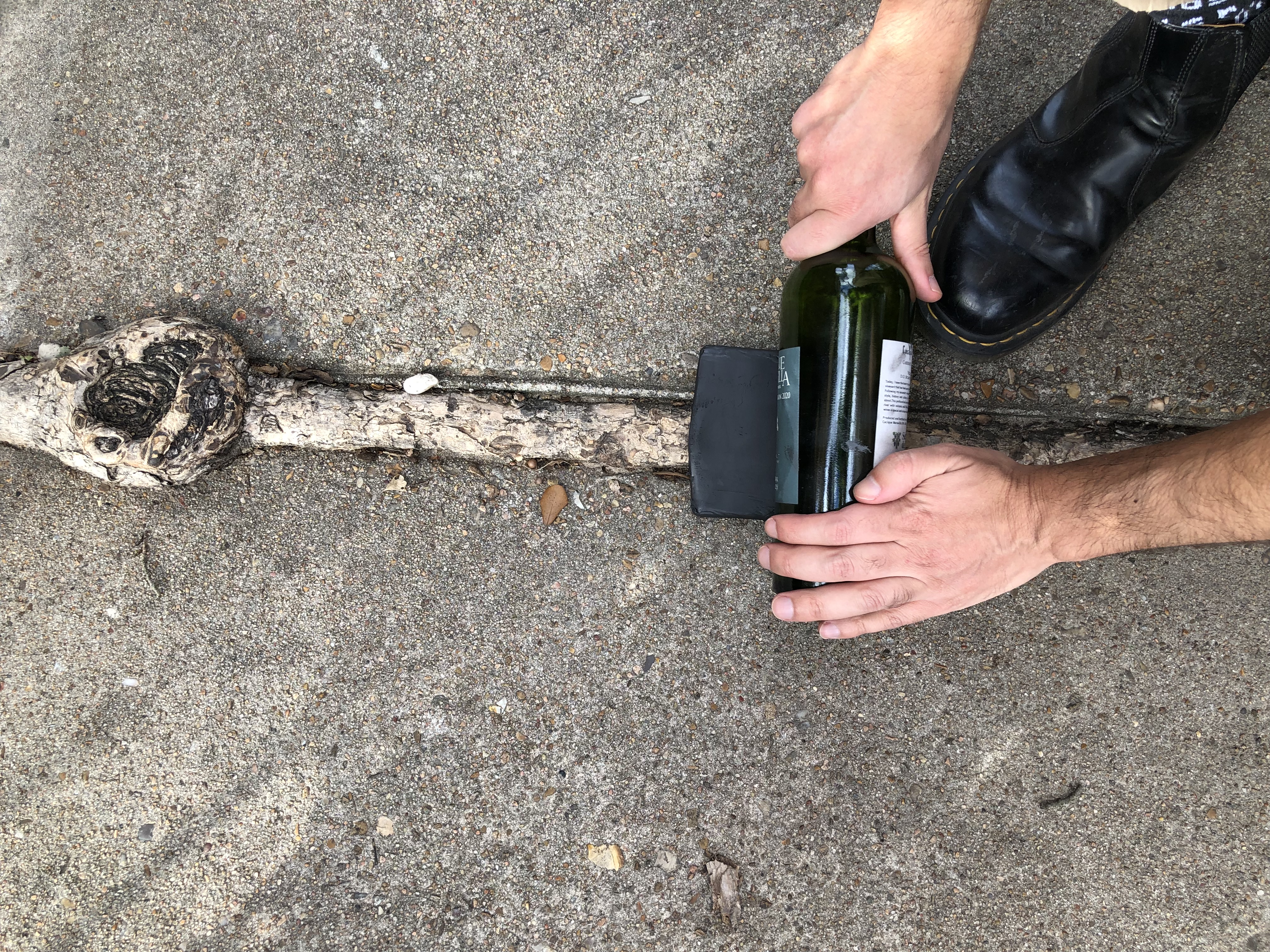
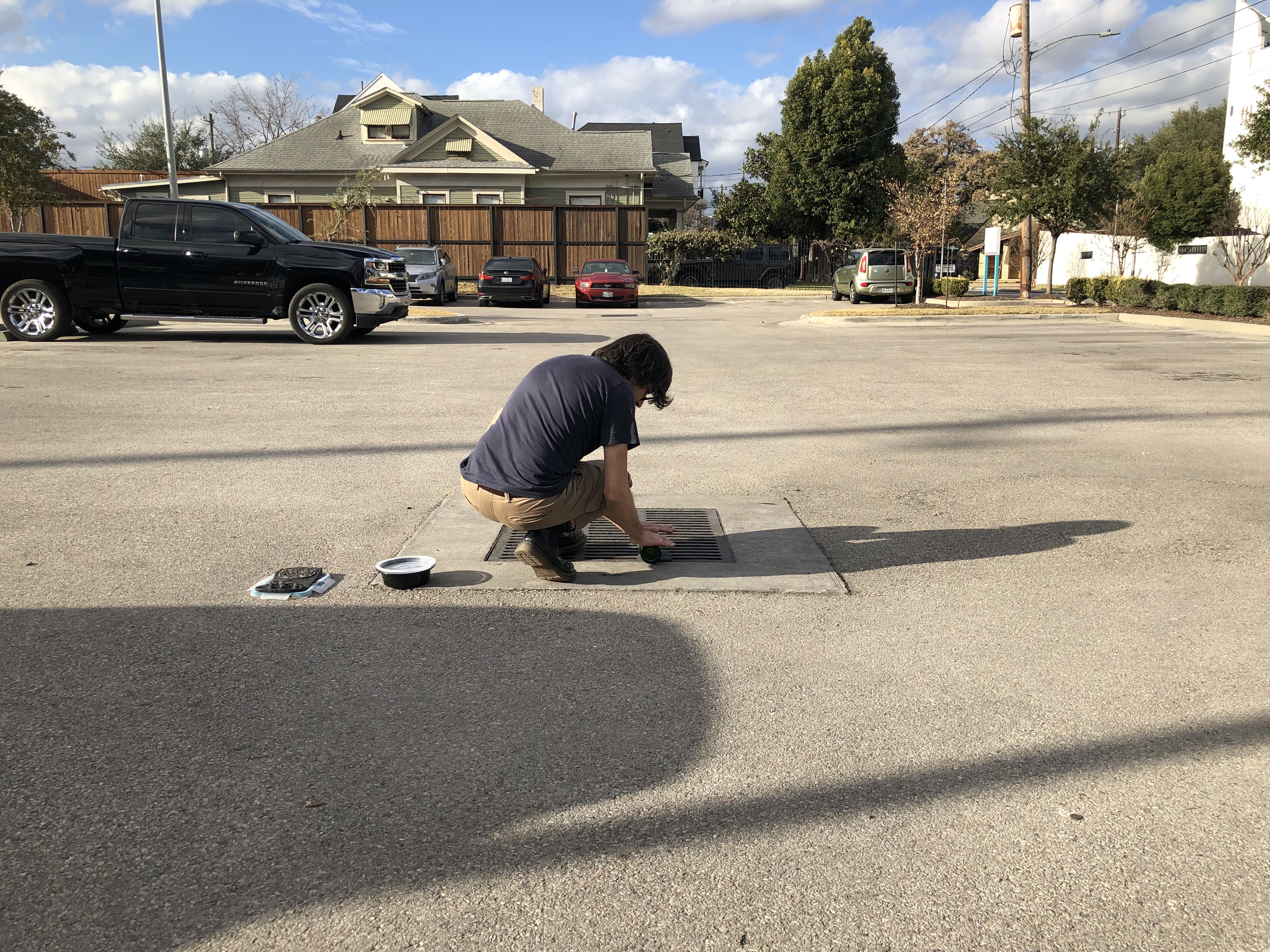
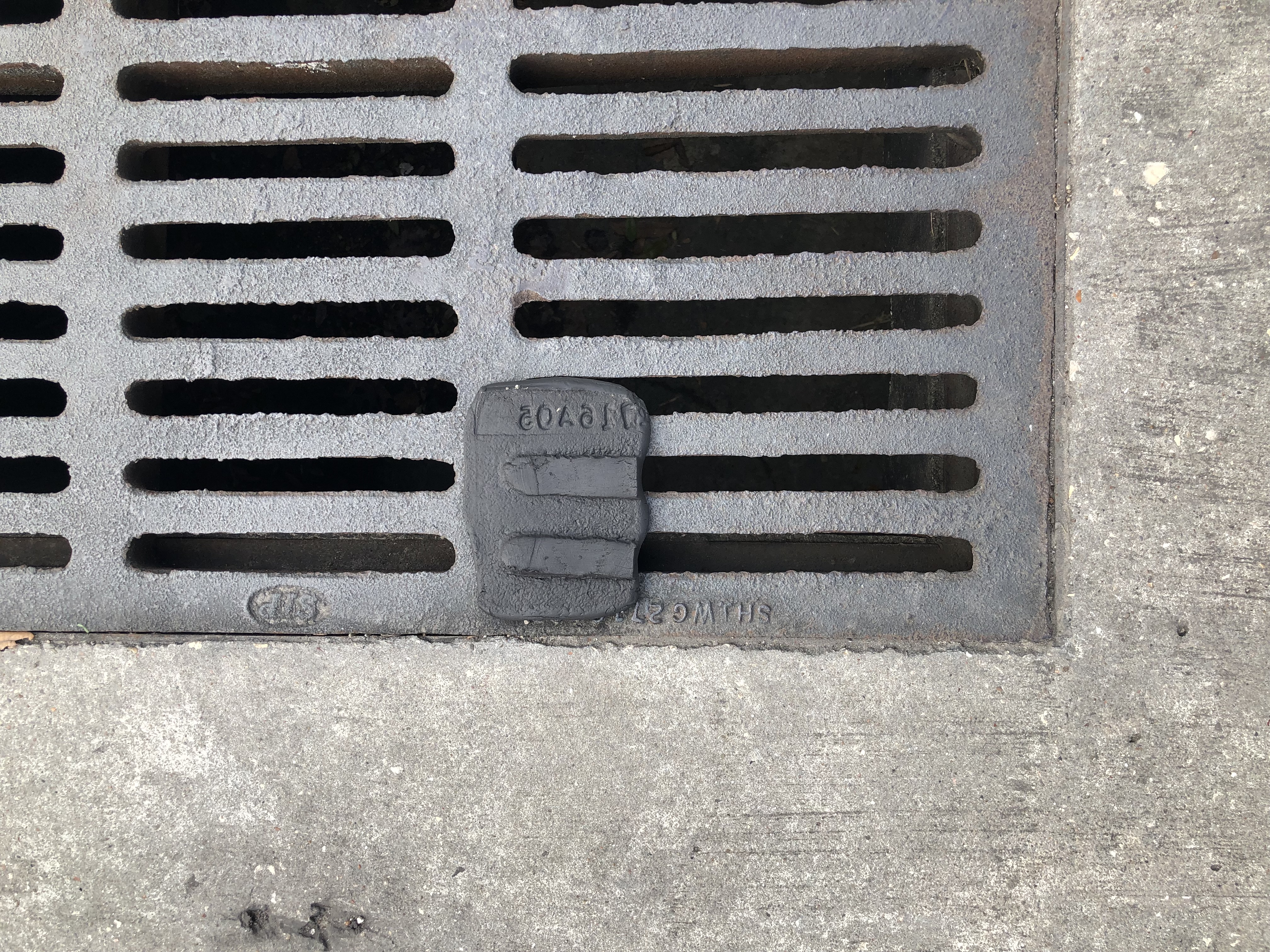
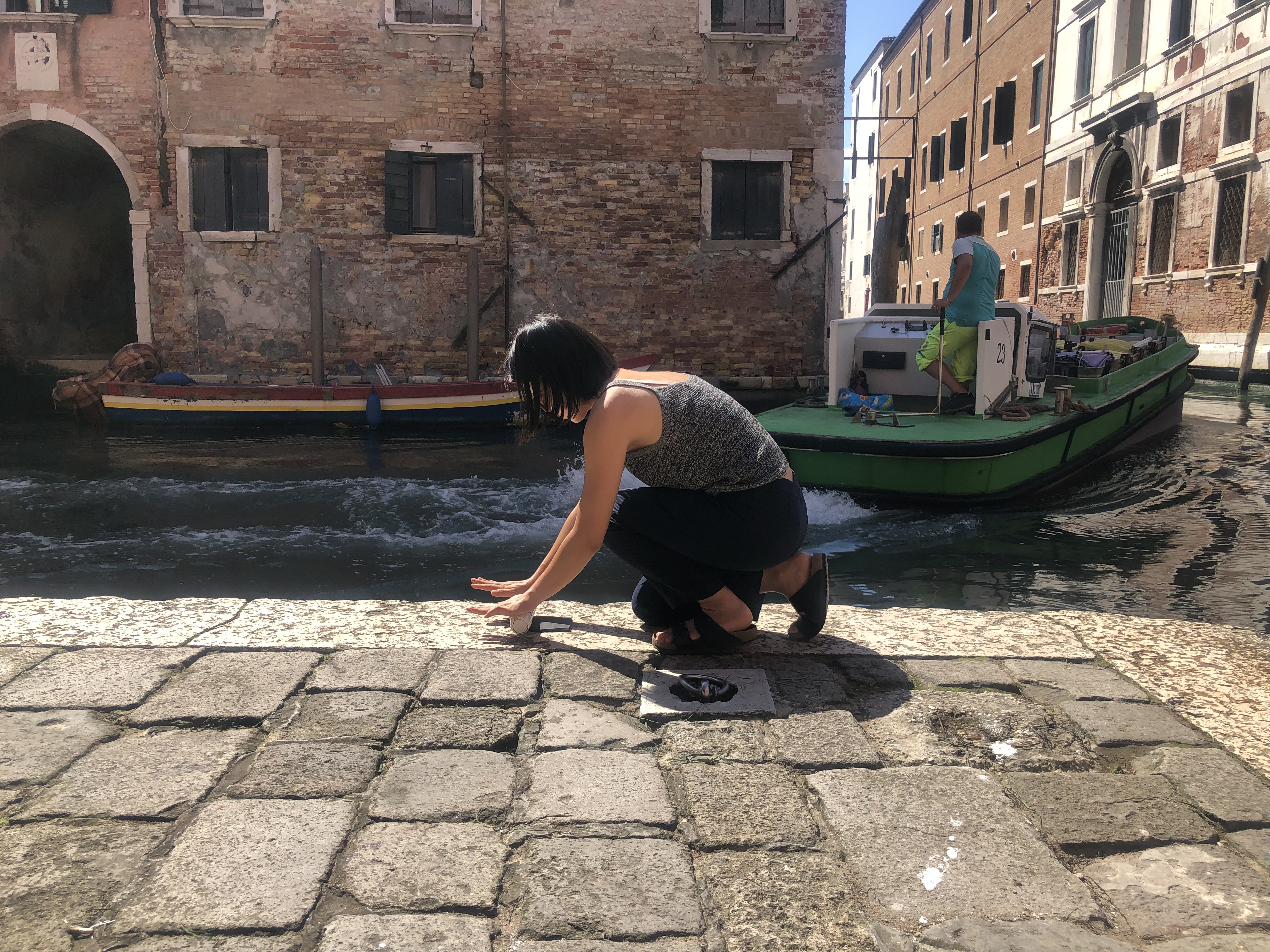
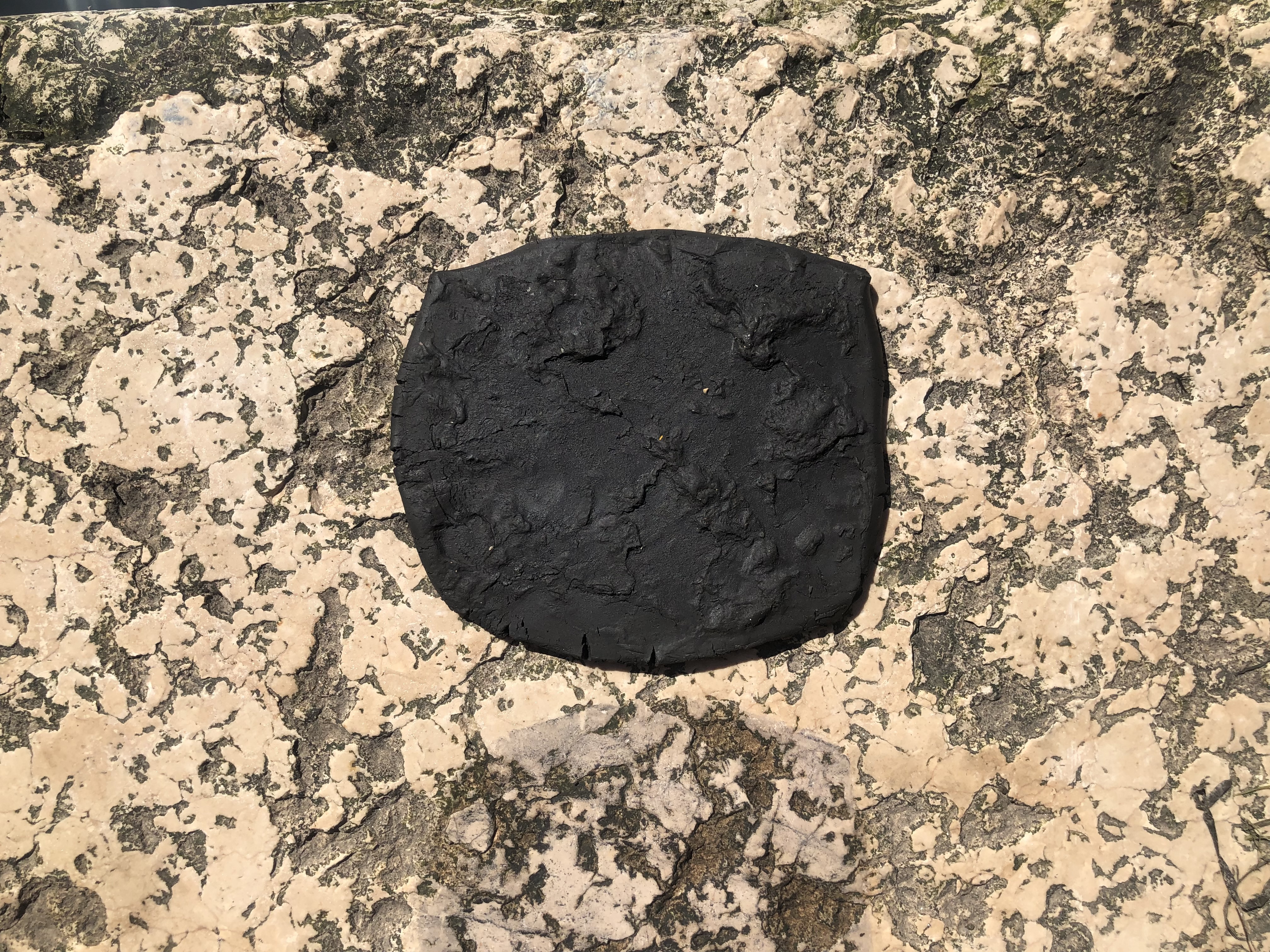
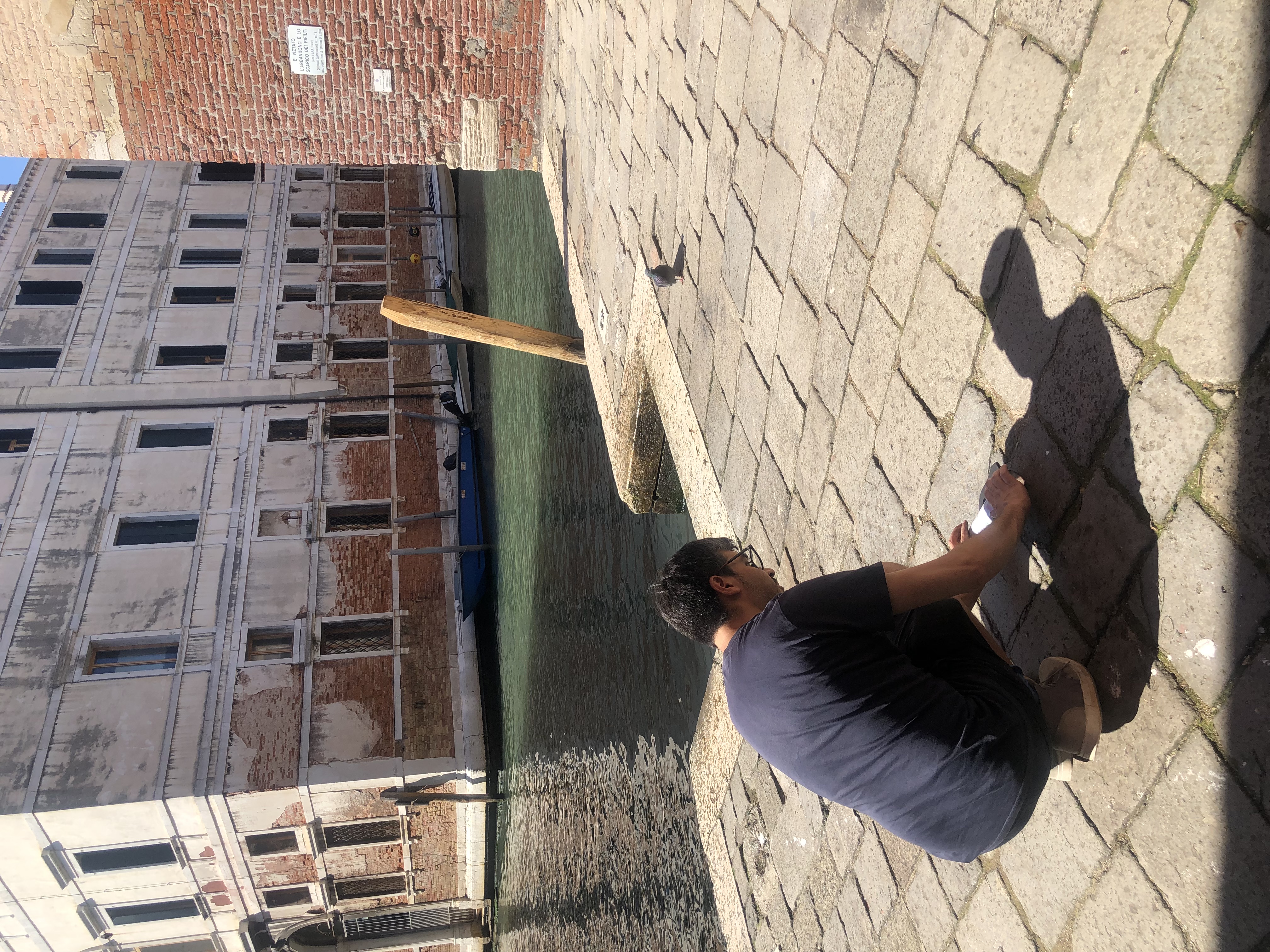
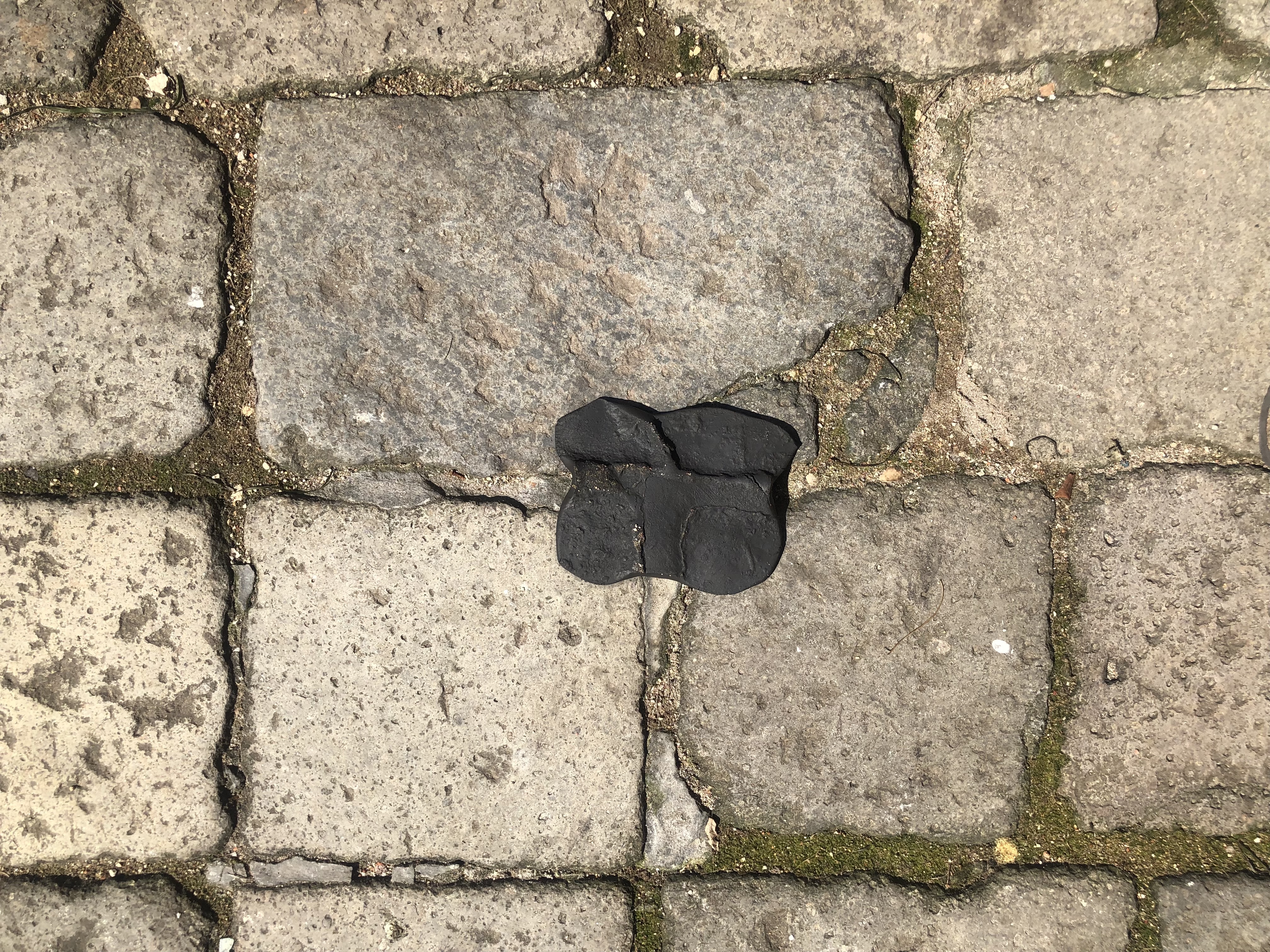

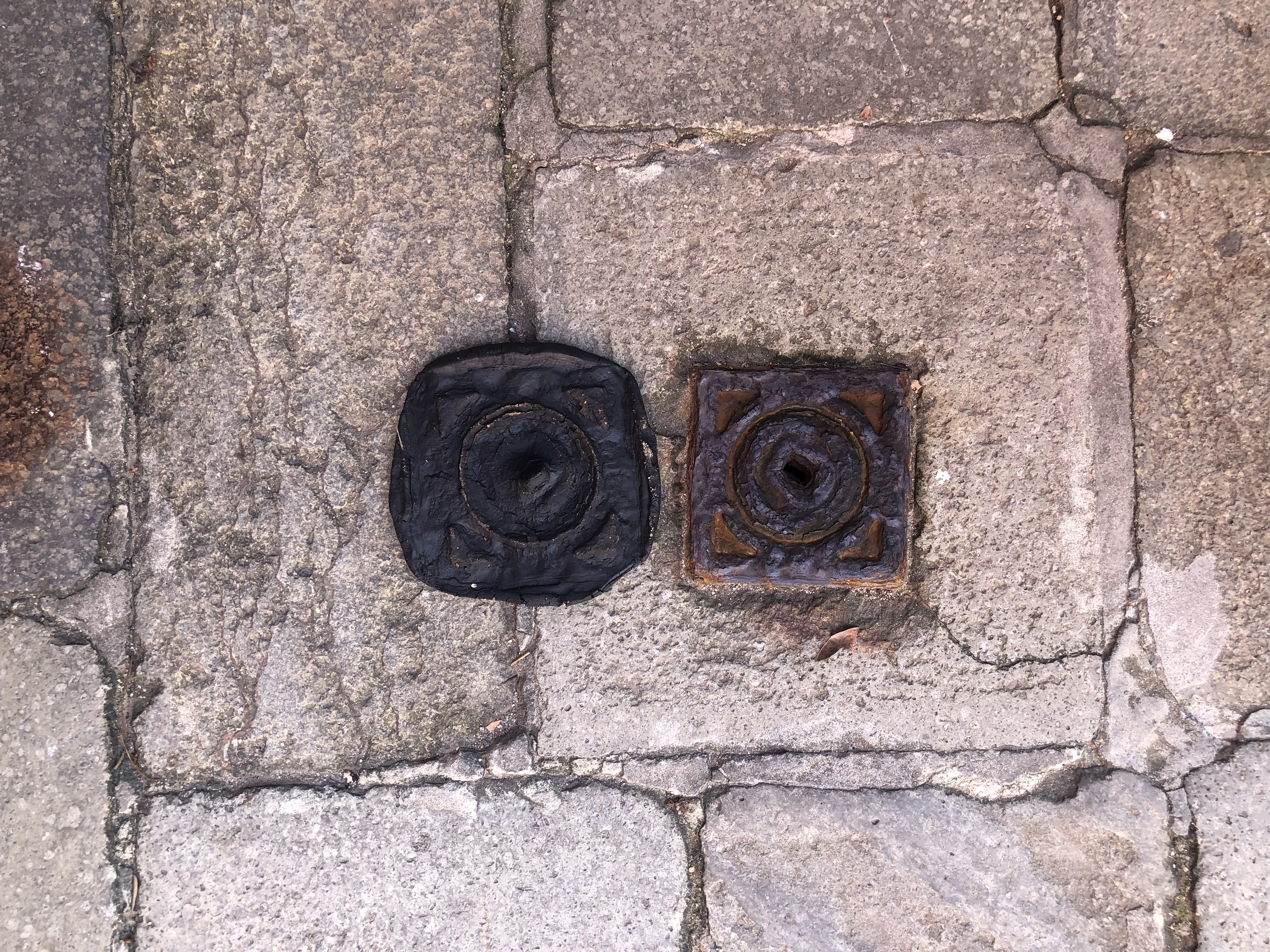
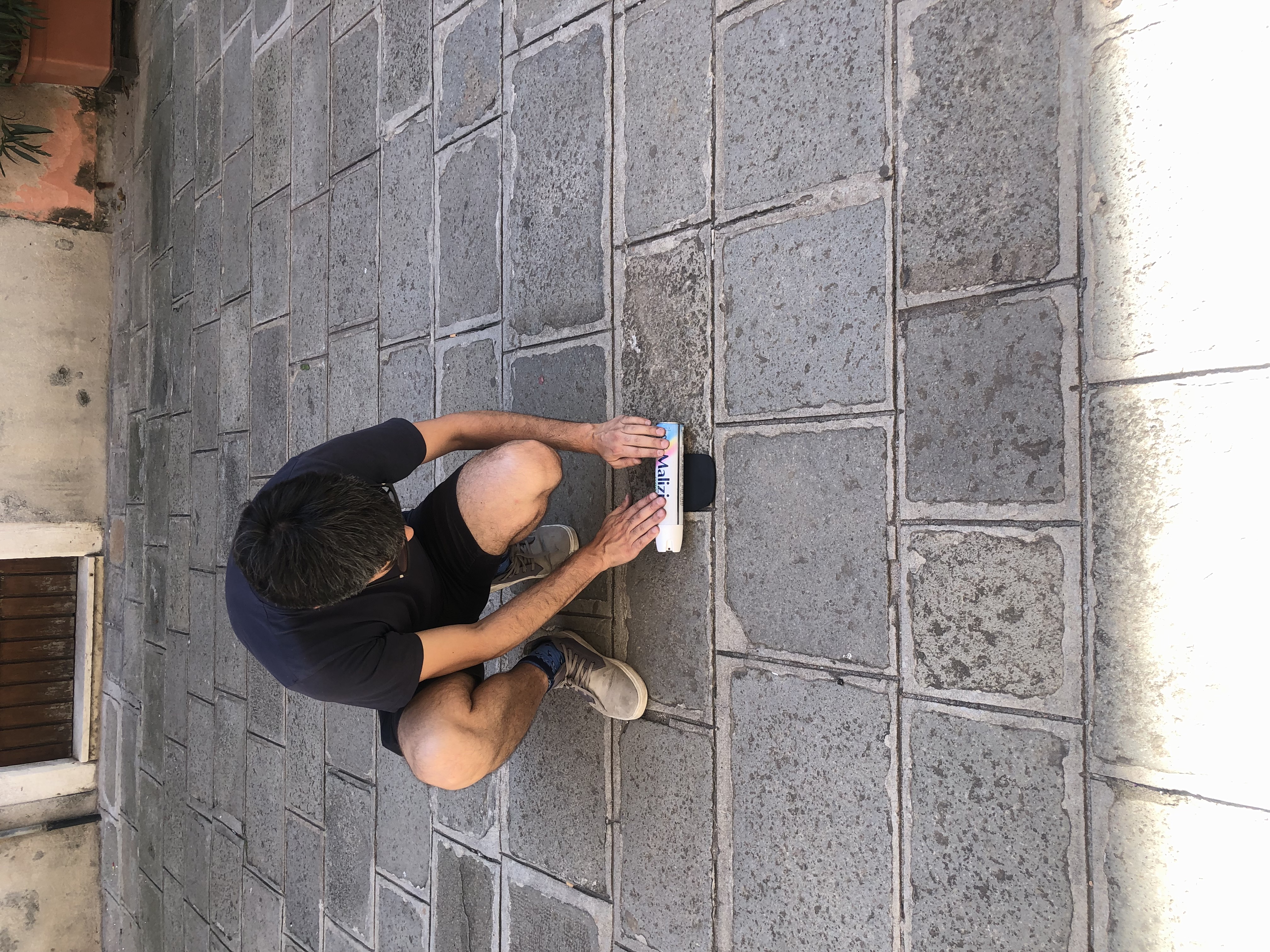

WOOD OFFCUTS
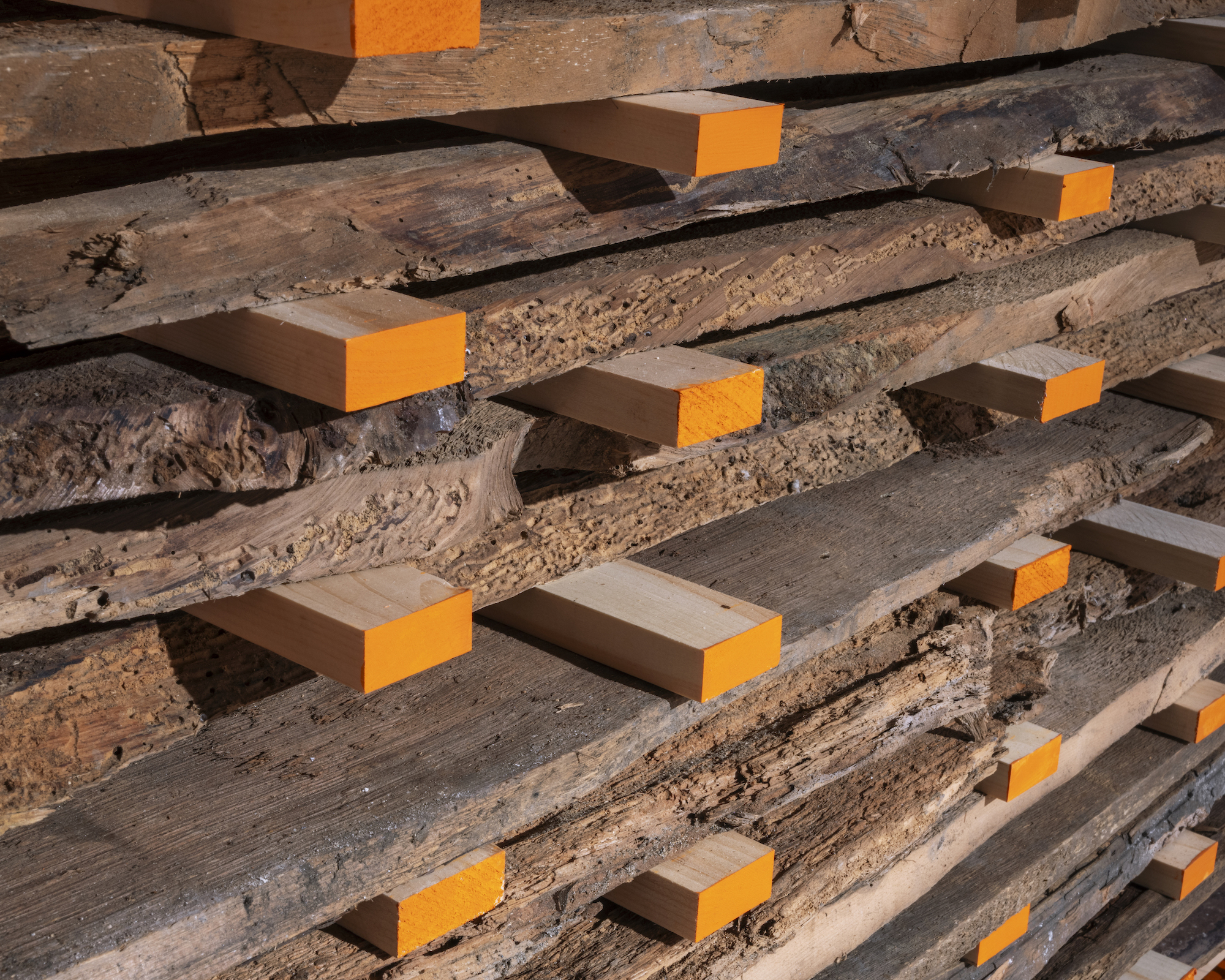
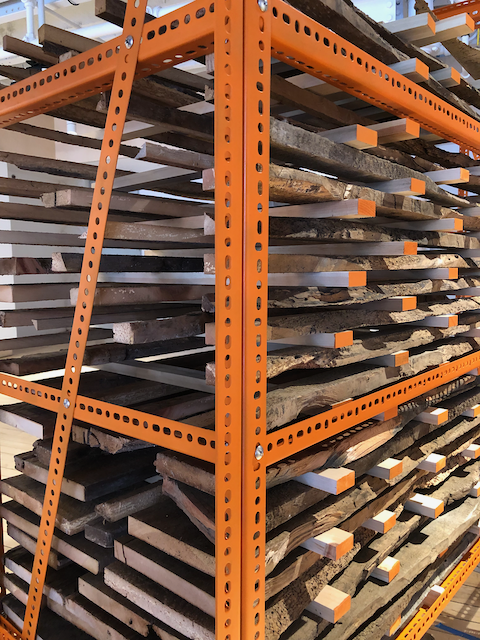


WOOD STACK
GALLERY BAY 03
Offcut (noun): "a piece of paper, plywood, fabric, etc, remaining after the main pieces have been cut; remnant." This definition relegates a piece of wood to a state of unimportance after dimensional lumber is extracted; that is, wood that is unintentionally undimensioned.
PRODUCT
Deconstructed from old barns in Connecticut, the “scraps” in this Wood Stack are in fact solid pieces of old-growth wood — thicker, wider, full of character, and more ringed than the plantation pine lumber one sees in a home improvement store today. These are not only building materials, but temporal records of forested landscapes that are today very much altered.
This bay echoes lumber stacks with spacers in between that would typically allow individual pieces to dry. Photos to the left show a historic example of drying lumber stacks at the Seattle Cedar Lumber Manufacturing Company's mill in Ballard, ca 1919 & 1920. (Image: Wikimedia Commons)
NOTE
Live edges create a stratified, almost geological appearance. A “live edge” slab is wood sawn all the way across the trunk to retain the living layer of the tree just under the bark (i.e. the tree’s cambium layer, which would produce new wood and bark).
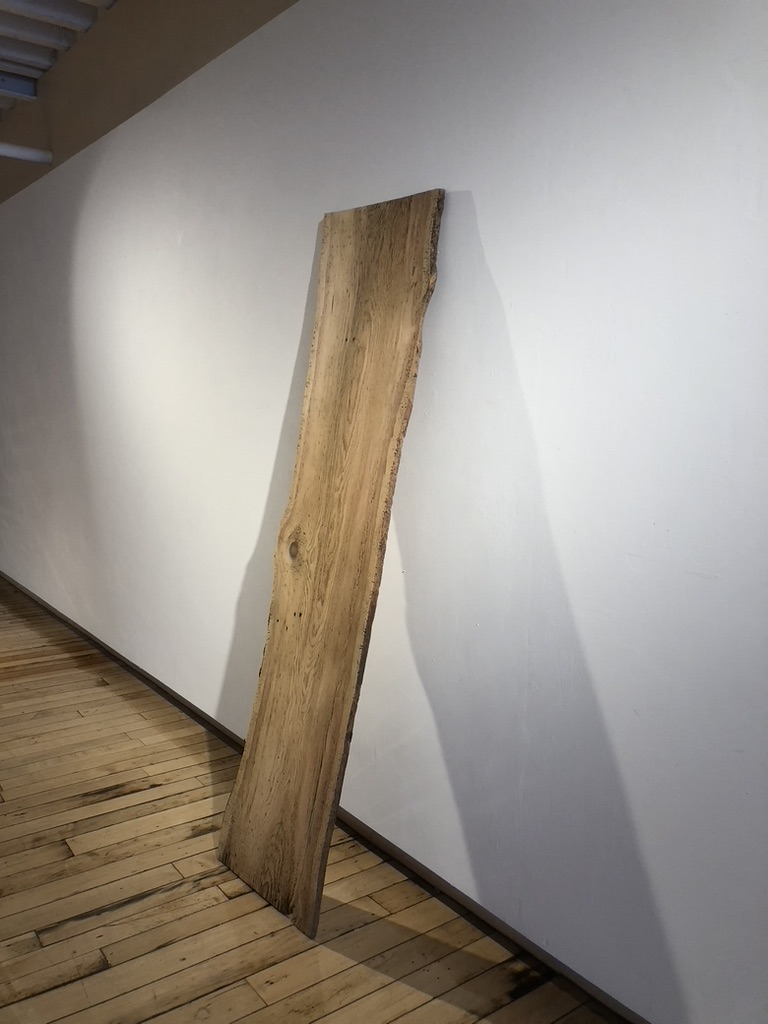
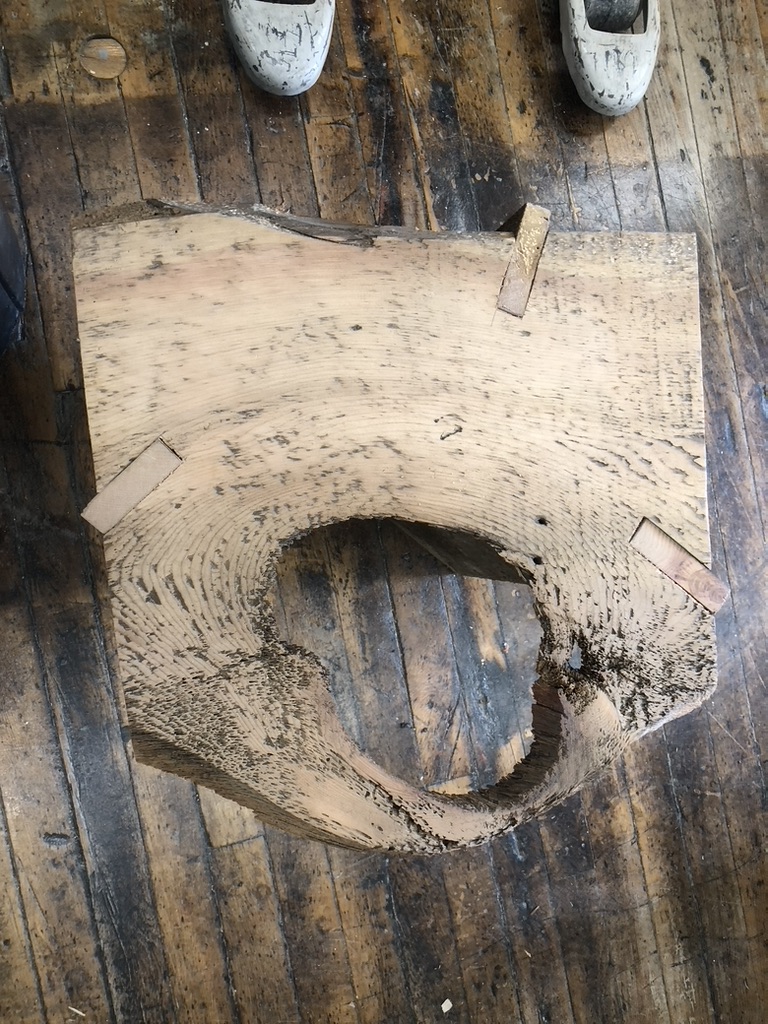
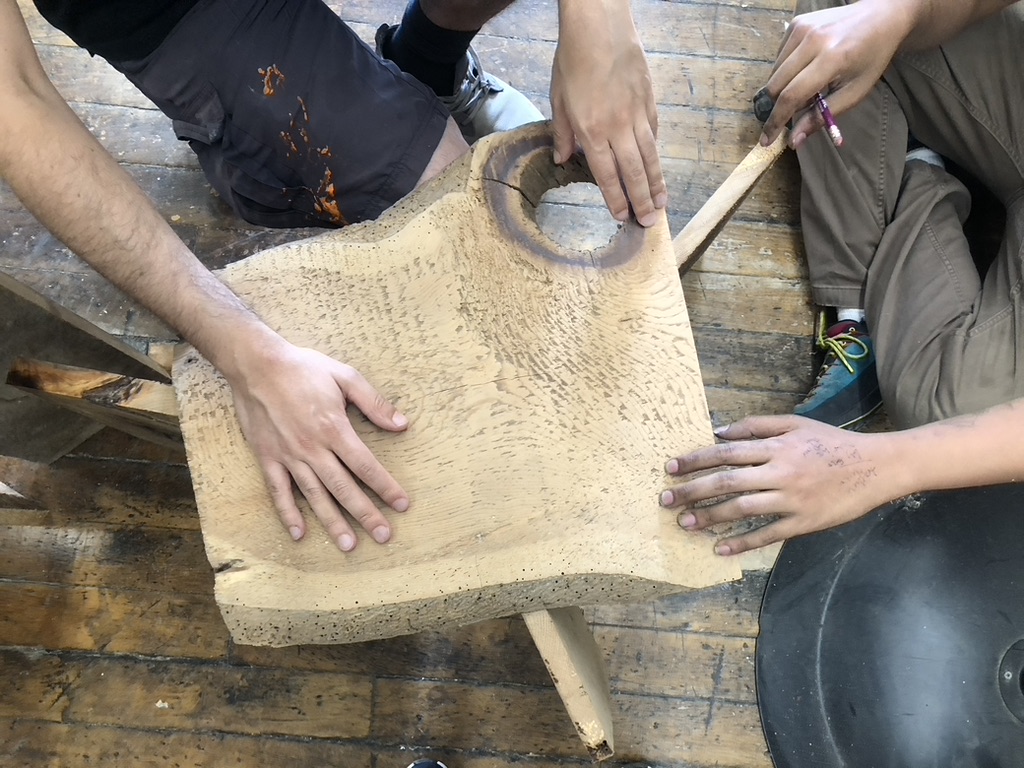


OFFCUT OBJECTS
FLOOR MODELS
Having escaped the shelves, errant pieces of scrap antique wood have wandered across the gallery. A tall 18th century hardwood floorboard leans coolly against the gallery wall, having been thoroughly sanded and given a new lease on life. A couple of knotty Old Wood Workshop.
See below for the D.E.P.O.T. Family Tree (catalog of 3D-scanned antique wood) and various other configurations.

DUST


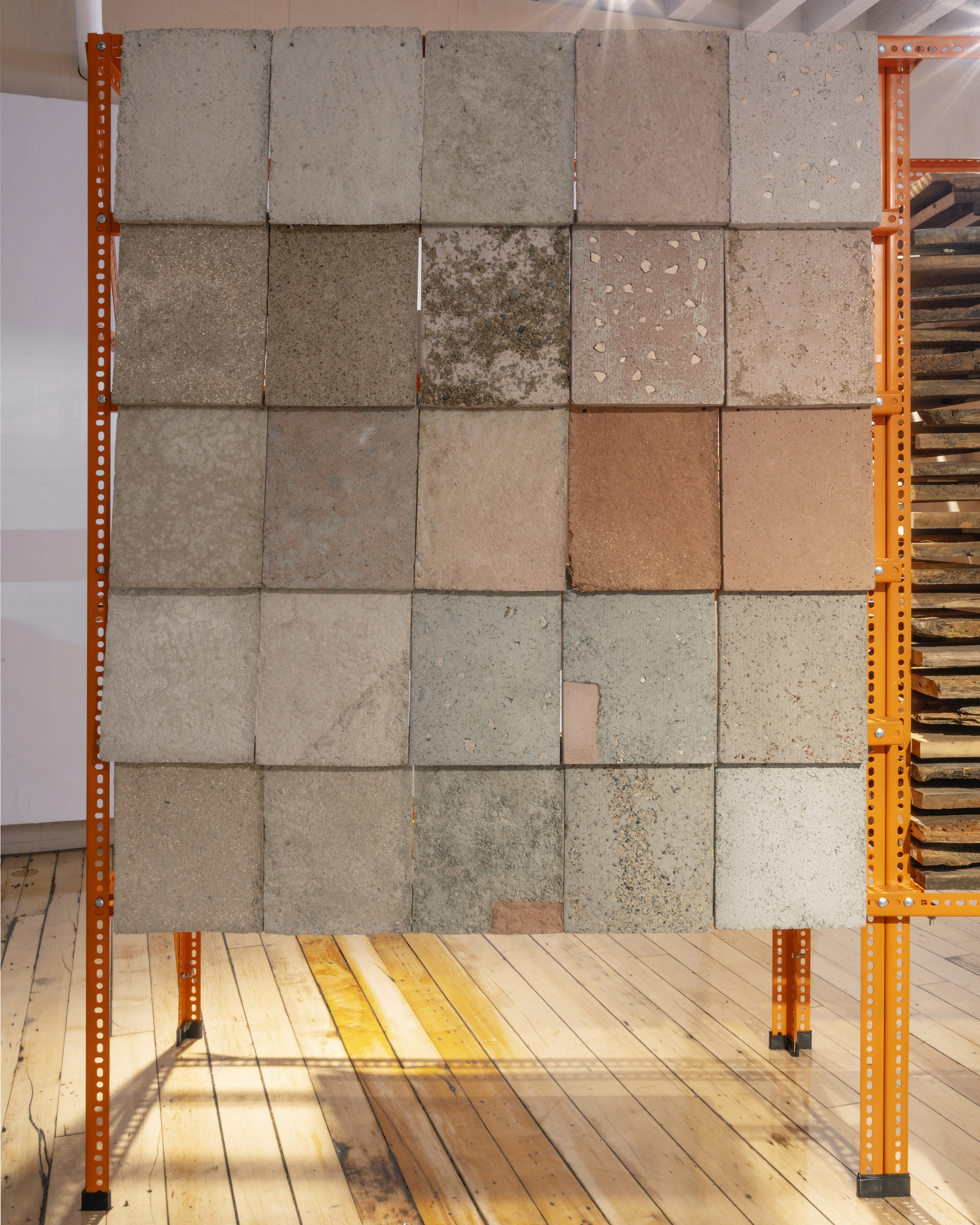
SAWDUST TILES
GALLERY BAY 04
Sawdust, brick dust, aggregate, crushed tile, decomposed granite, gypsum crumble... Dust is pure byproduct, the ultimate waste material, proliferating from cutting, sanding, transporting, and erosion of construction material. Dust is never really the focus of building, but rather, that which must be swept away.
This bay attends to the surplus of the surplus waste from dustbins of material production. Here, dust is recouped and repurposed:
- as a non-extractive sand replacement in cementitious product,
- as a bulk material for brick and tile making,
- as a natural coloring agent.
PRODUCT SAMPLES TBA
(EXPERIMENTAL QUANTITIES)

SD sawdust from shop waste
BD brick dust from brick tile upcycler
C cement, may be replaced with fly ash /lime
RD refractory dust (ceramic grog)
ED eggshell
SP soil bank pebbles
G gypsum scrap from drywall
DG decomposed granite (stone dust)
CC crushed ceramic tile
CO coffee grounds (dried)
MS metal shavings
W water

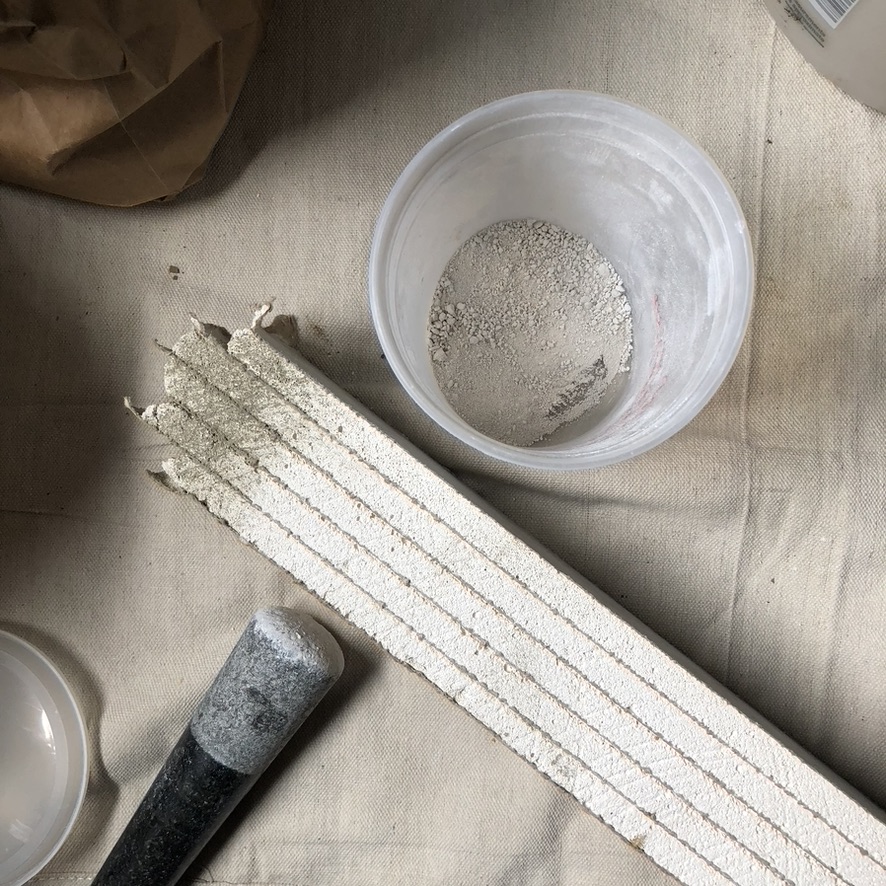
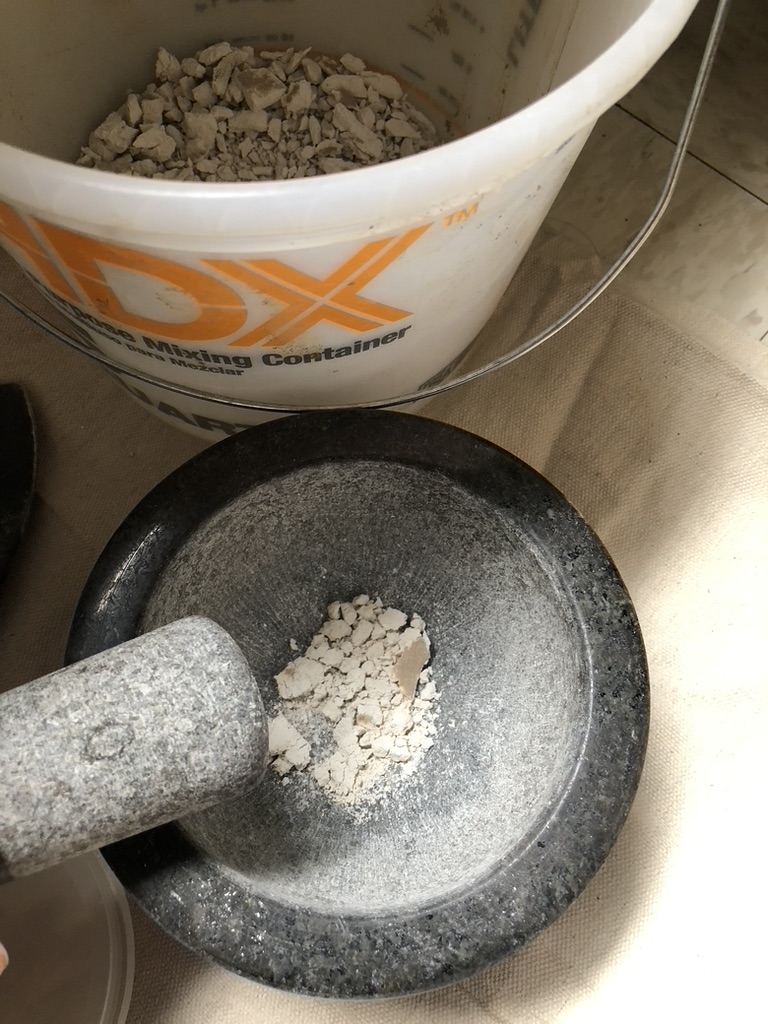
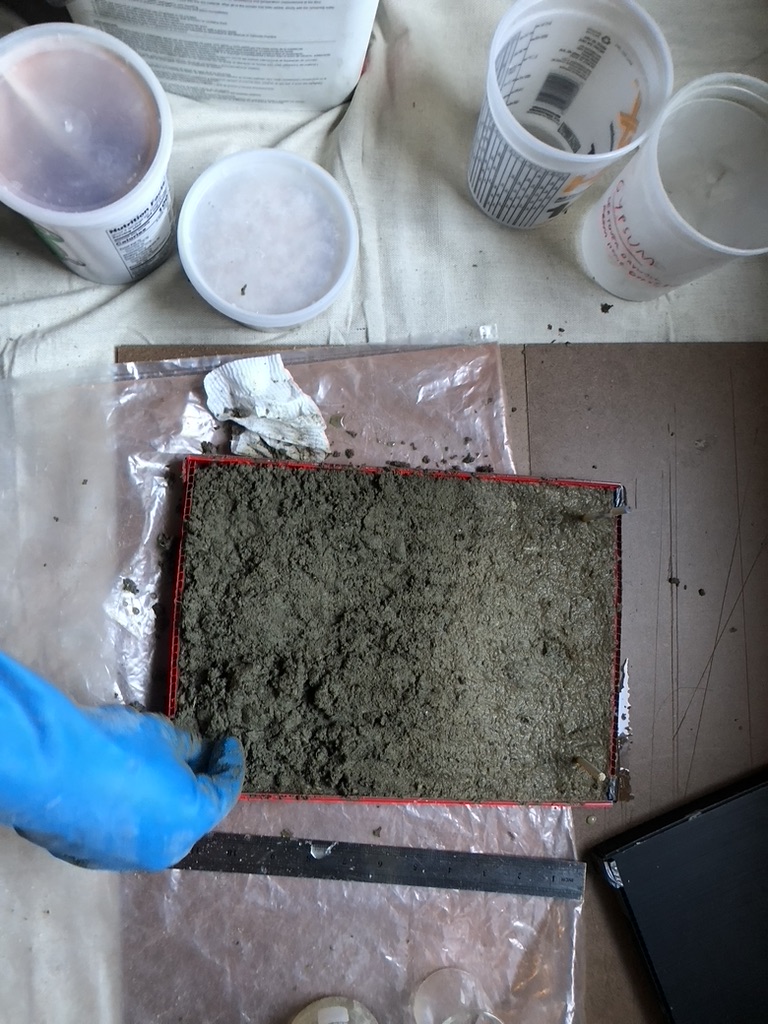
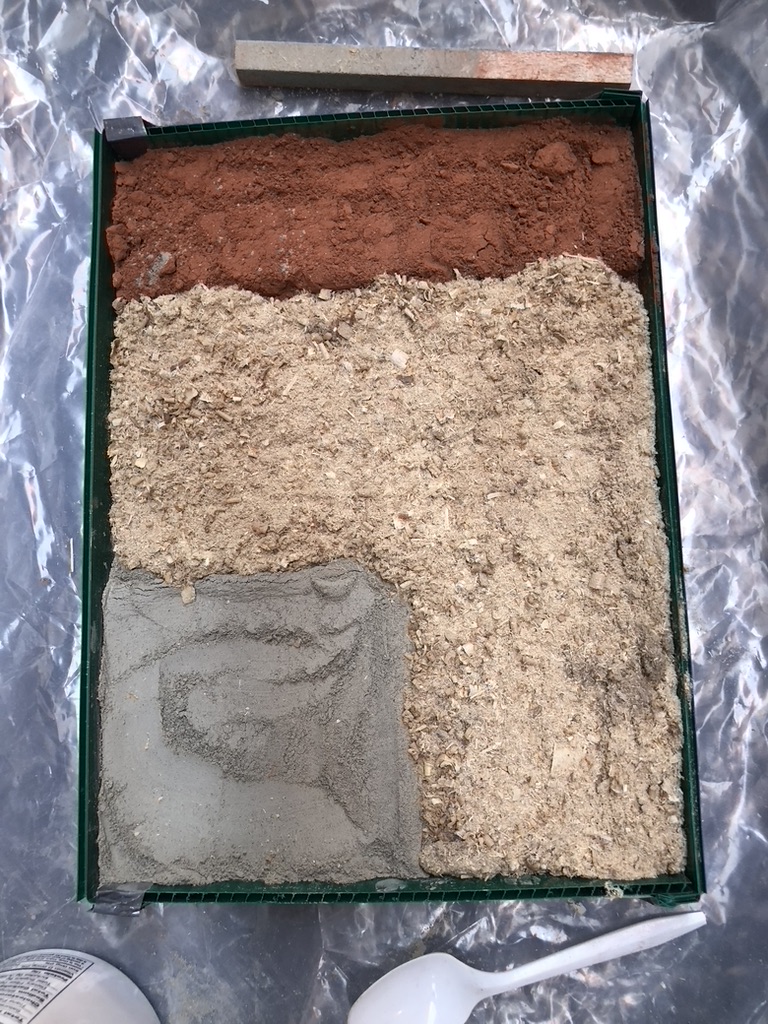
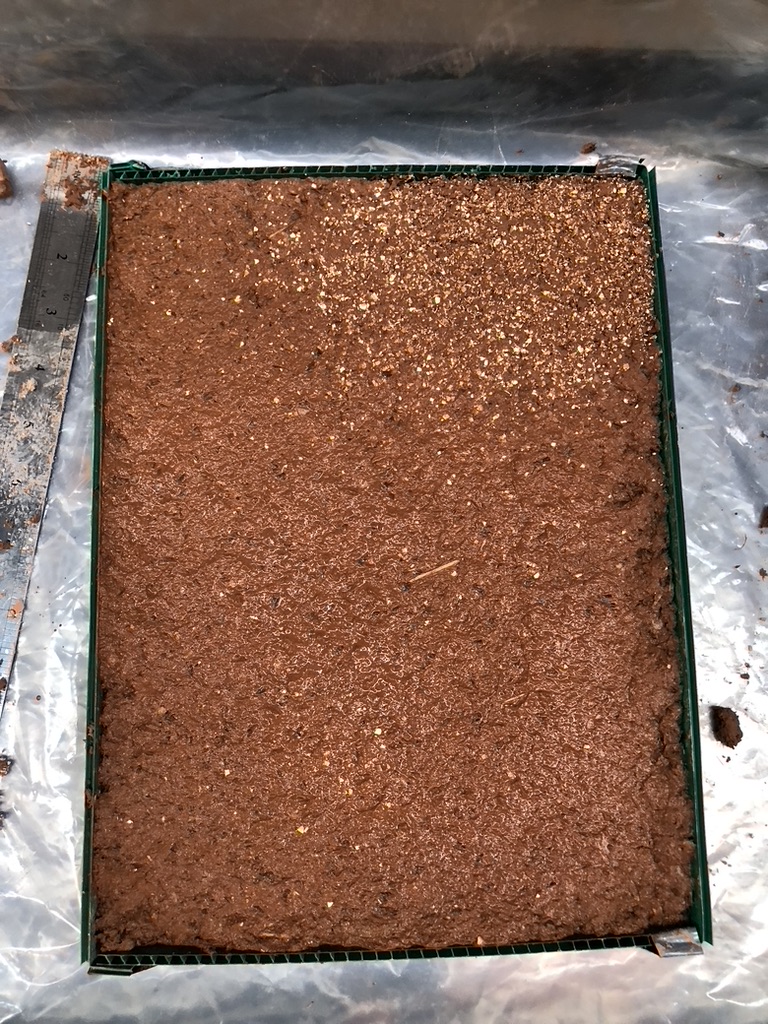
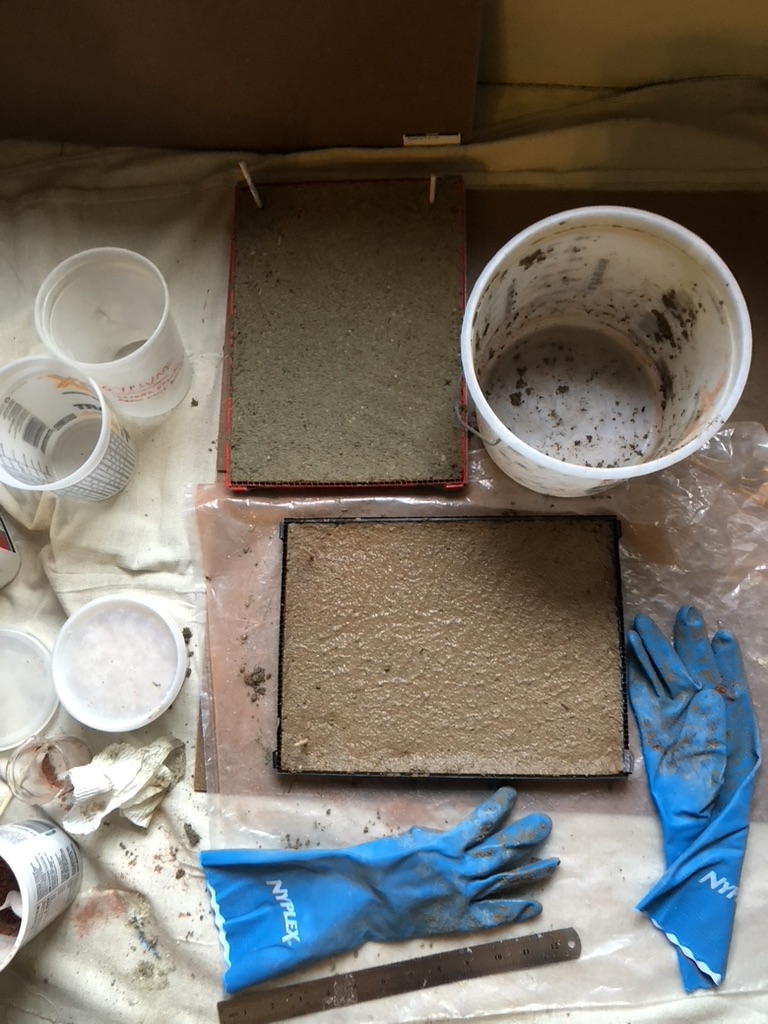



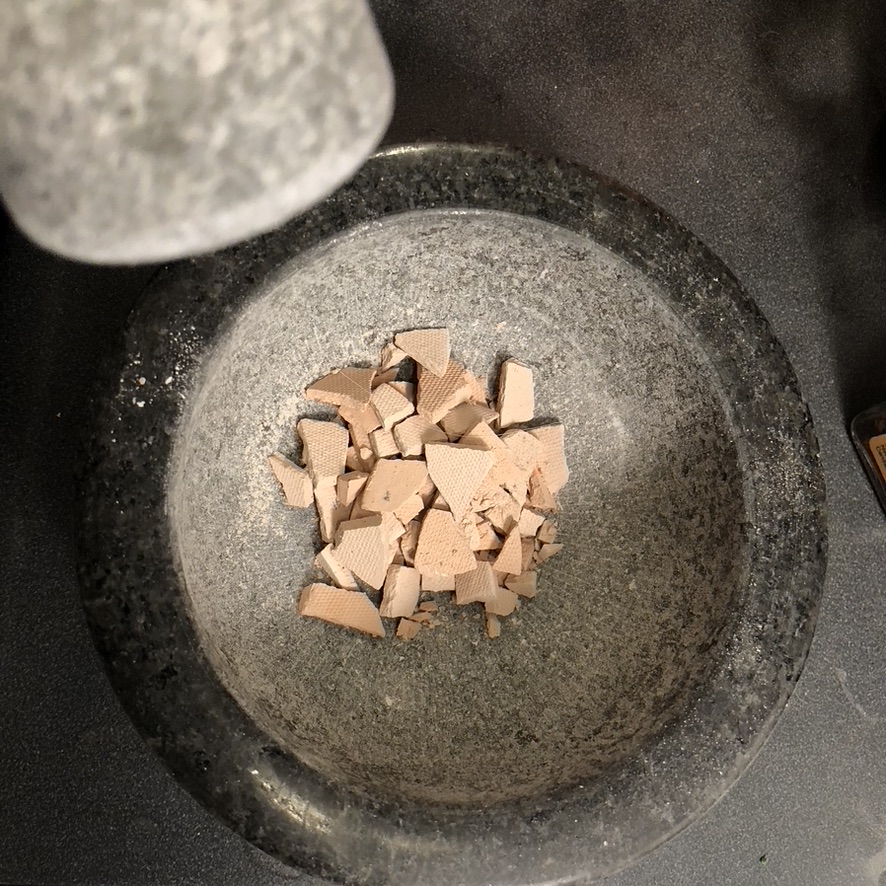



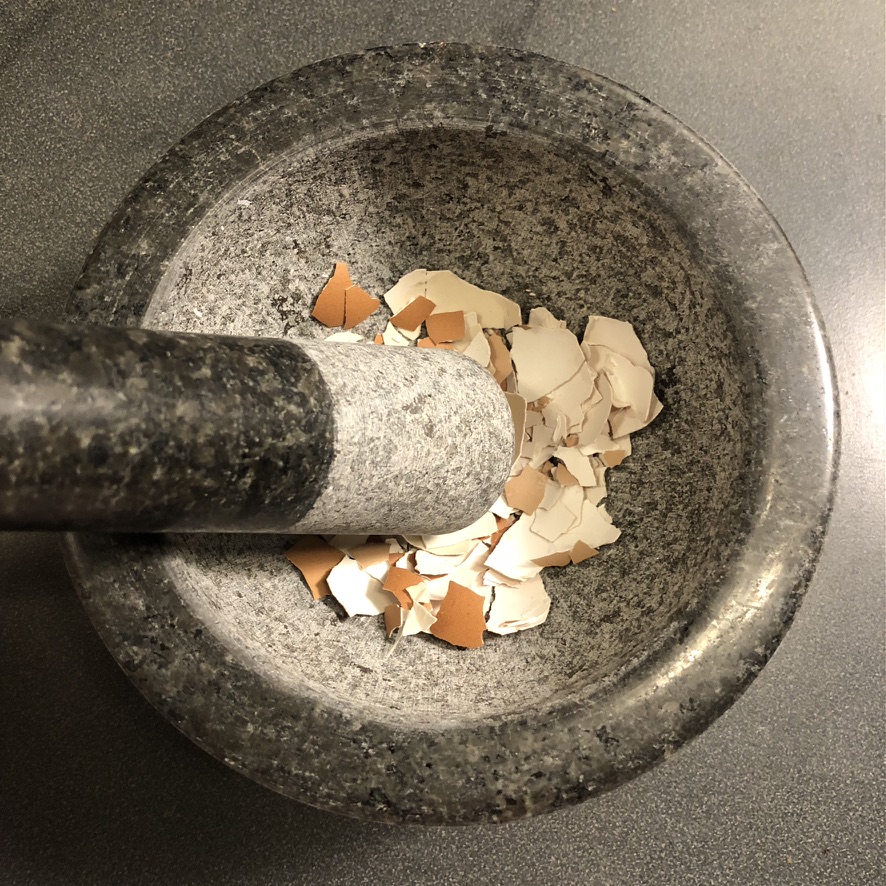

ADMIXTURES /
OTHER KINDS OF DUST
GALLERY CRATES
Apart from sawdust, a range of exploratory bricks have been made to test different construction-based and organic matter: ceramic dust, stone dust, eggshell. Product samples provided in stockroom.
Dust binder: homemade bioresin or bioplastic.
Base recipes adjusted from Materiom.
SAMPLE A: TWO-TONE BIOBRICK Decomposed granite dust, unfired ceramic tile, gelatin, glycerin, water
6”x2”x1”
Air-dried
Cure time: 8 days
Decomposed granite (“stone dust”) is a common landscaping material and comes from the natural weathering/erosion of solid granite. Unfired clay was sourced from RISD Ceramics Department’s waste stream. Colors may vary.
NOTES
Retains shape well,w ith no deformation. Dries from outside-in.
OTHER KINDS OF DUST
GALLERY CRATES
Apart from sawdust, a range of exploratory bricks have been made to test different construction-based and organic matter: ceramic dust, stone dust, eggshell. Product samples provided in stockroom.
Dust binder: homemade bioresin or bioplastic.
Base recipes adjusted from Materiom.
SAMPLE A: TWO-TONE BIOBRICK Decomposed granite dust, unfired ceramic tile, gelatin, glycerin, water
6”x2”x1”
Air-dried
Cure time: 8 days
Decomposed granite (“stone dust”) is a common landscaping material and comes from the natural weathering/erosion of solid granite. Unfired clay was sourced from RISD Ceramics Department’s waste stream. Colors may vary.
- Crush waste tile into powder with a mortar & pestle.
-
Combine with bioresin base and compress into mold.
- Repeat with decomposed granite. Unlike ceramic powder, stone dust should “melt” easily into biroesin.
NOTES
Retains shape well,w ith no deformation. Dries from outside-in.
